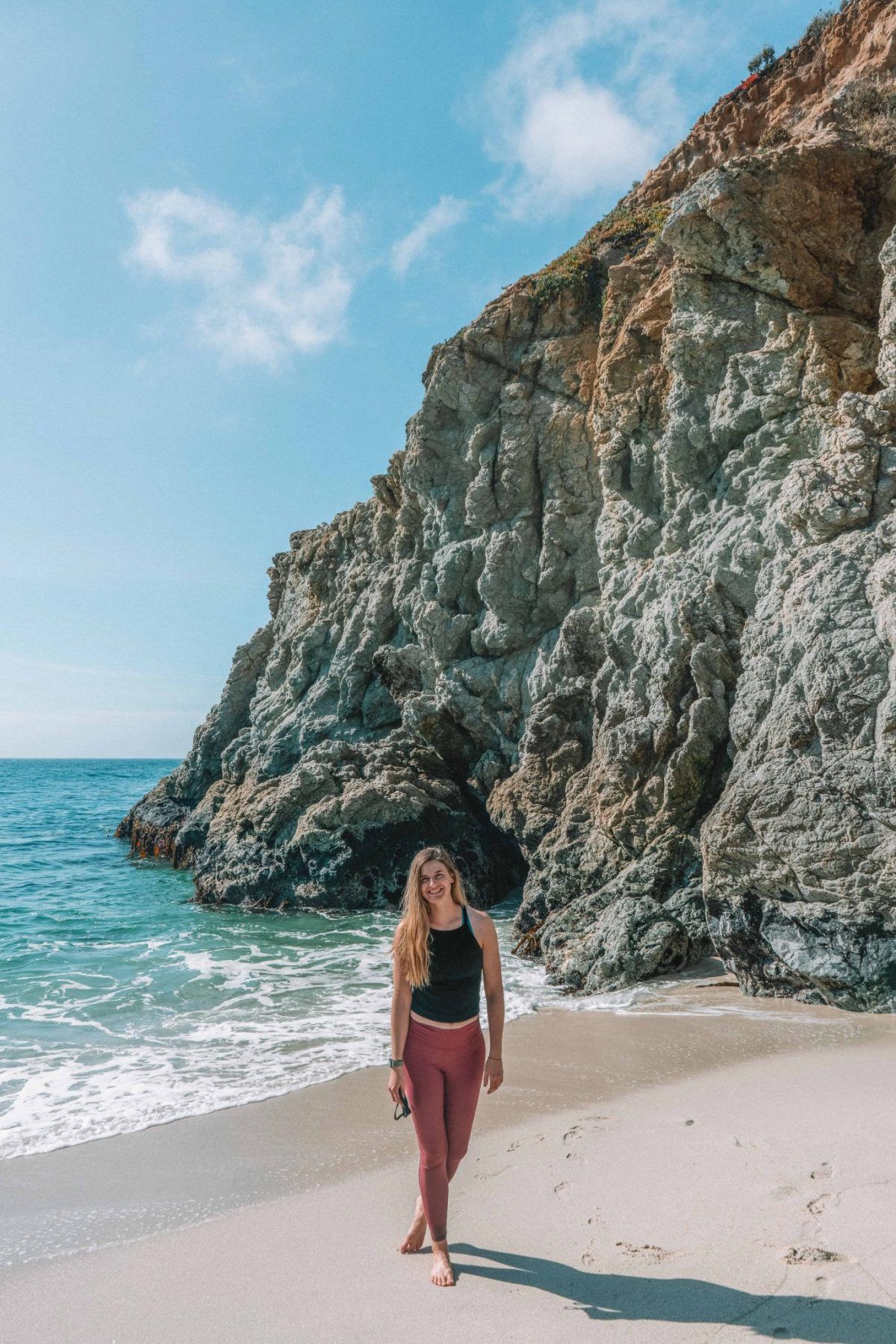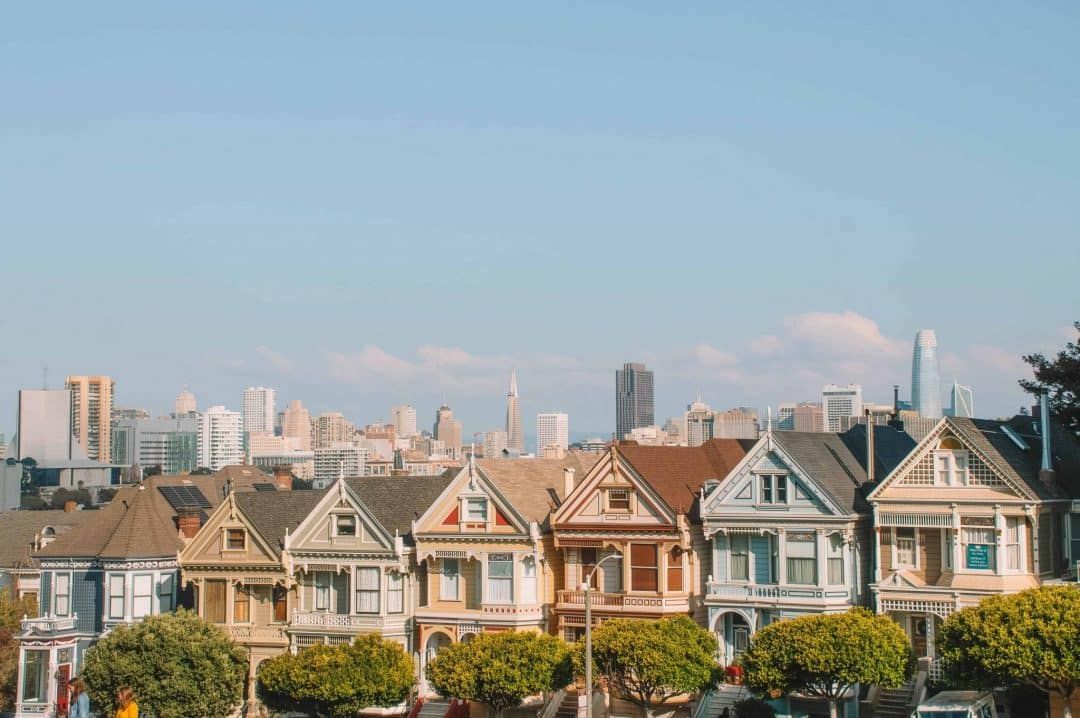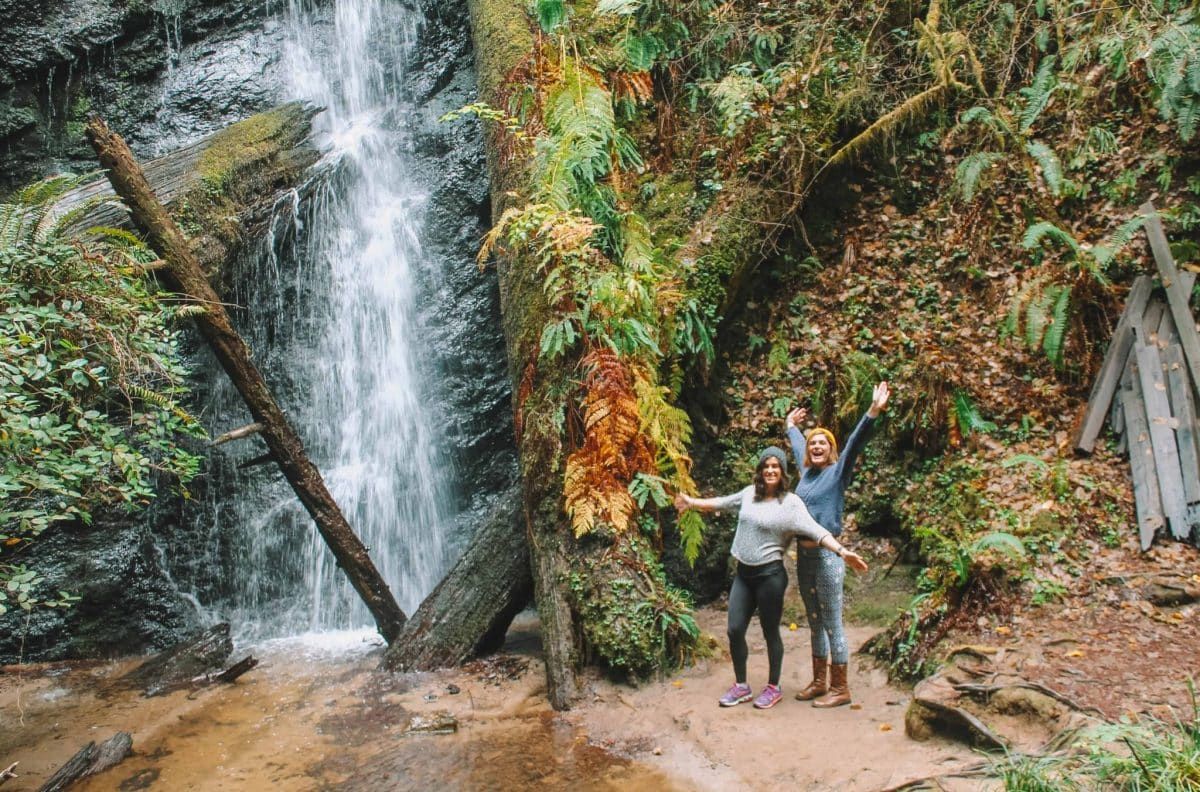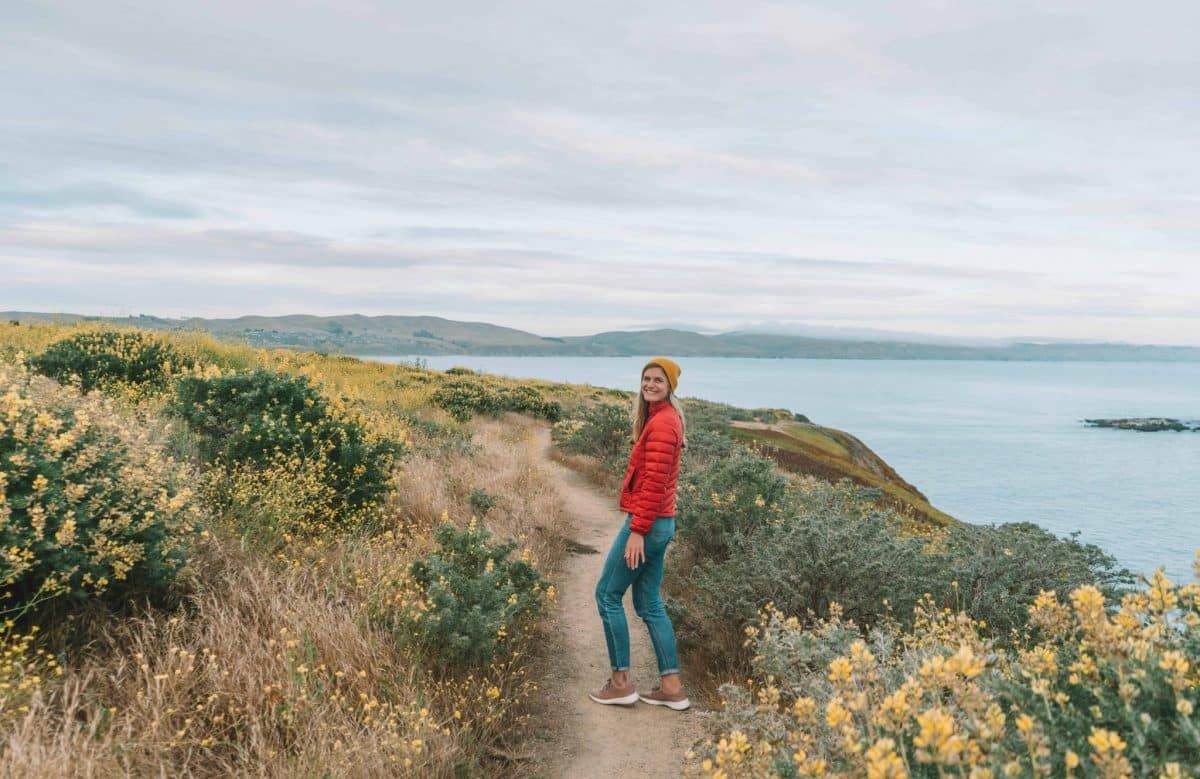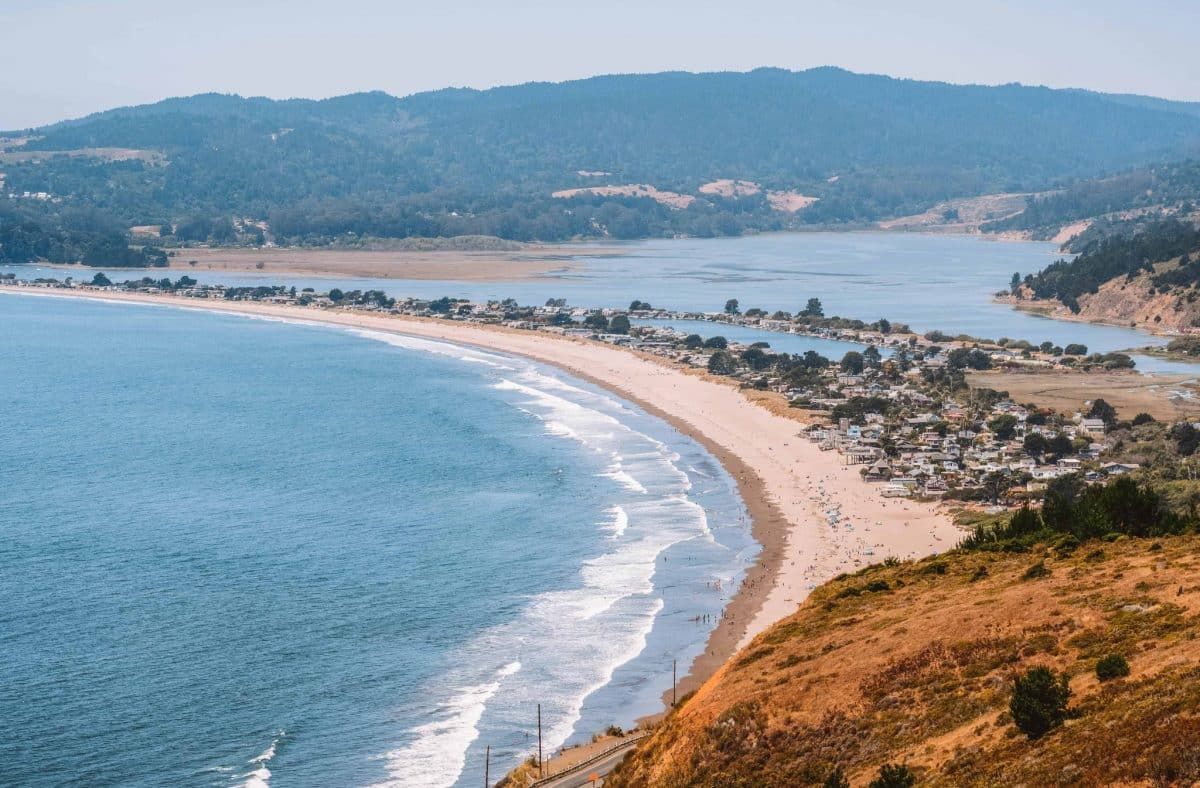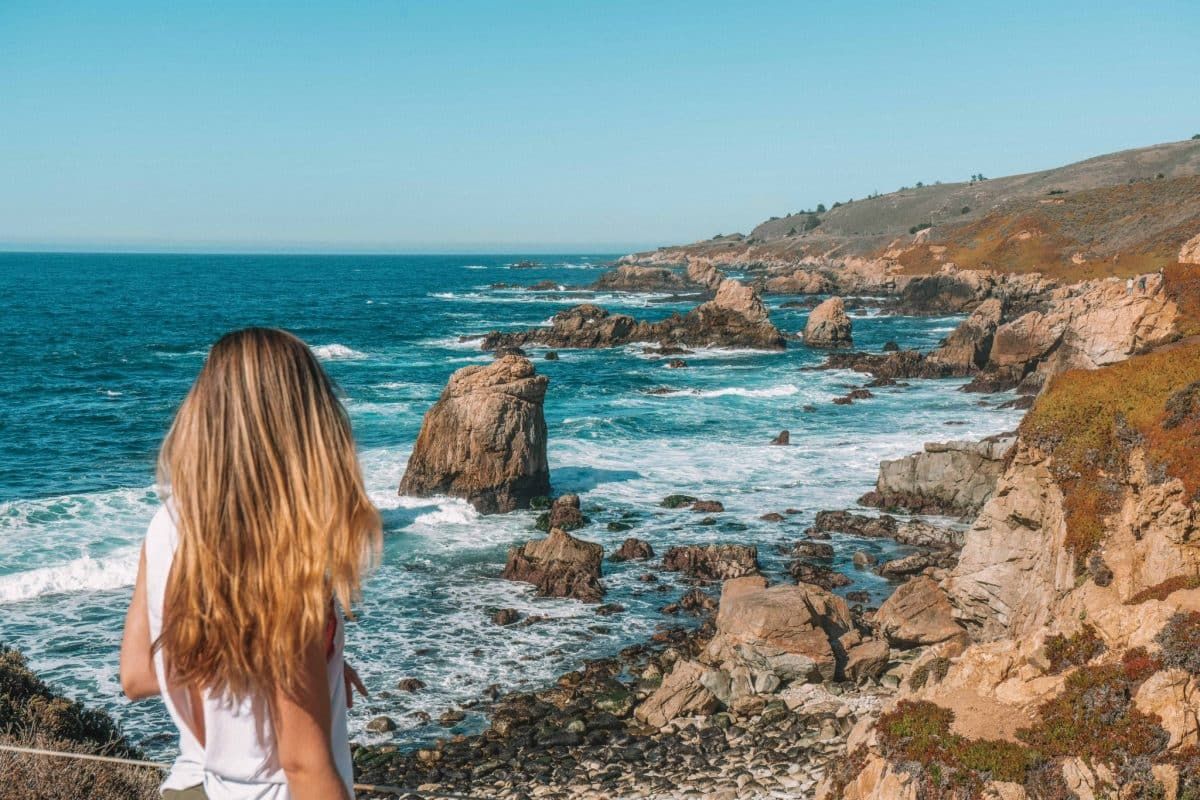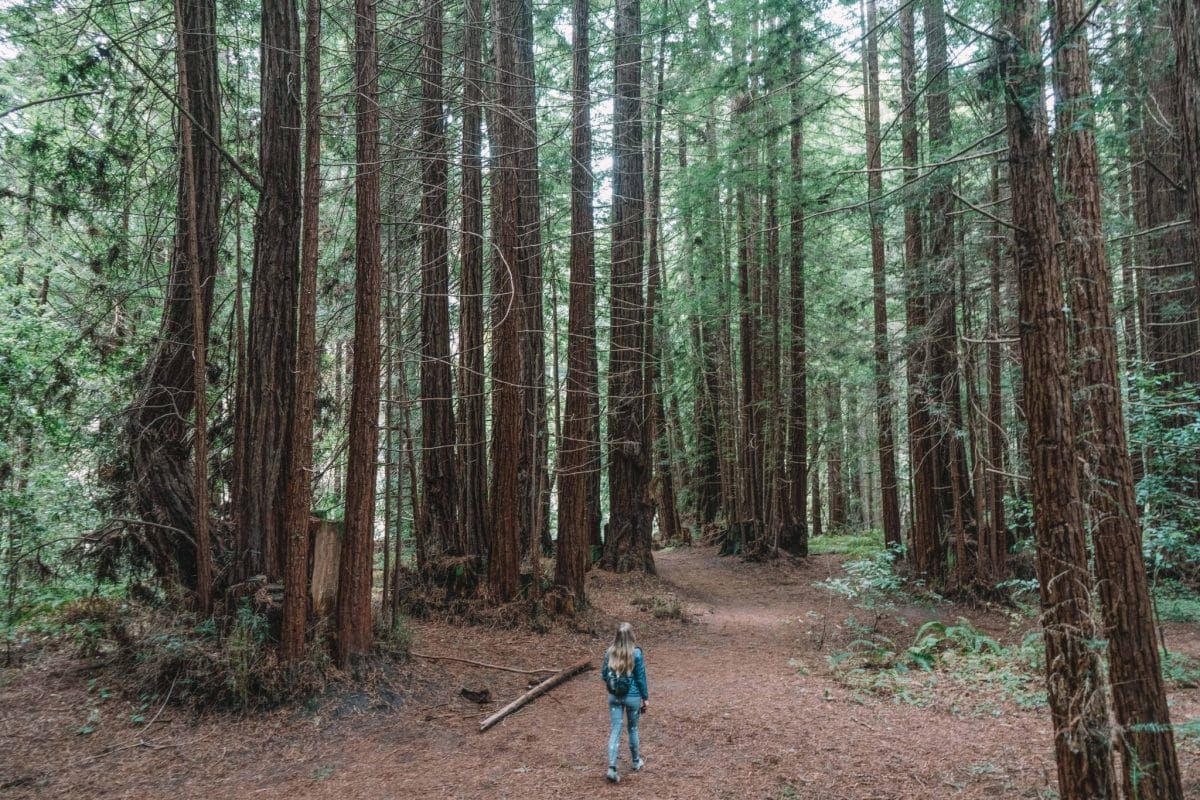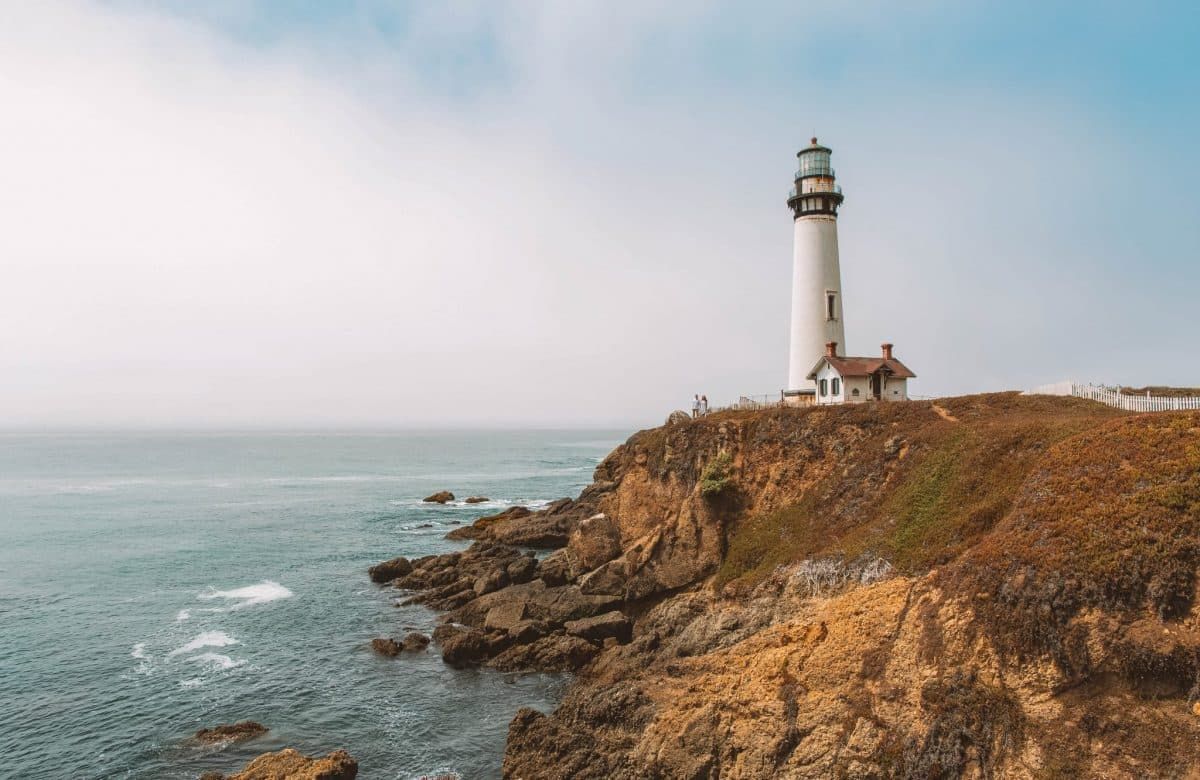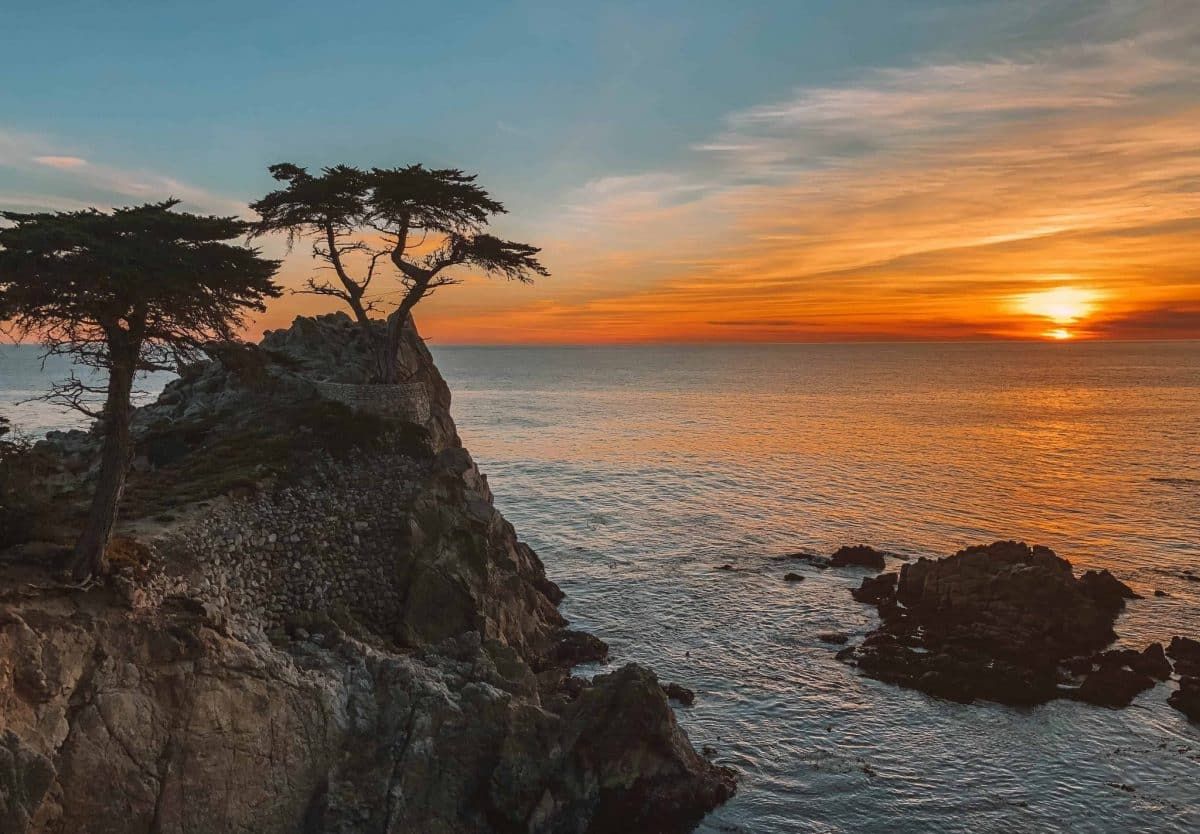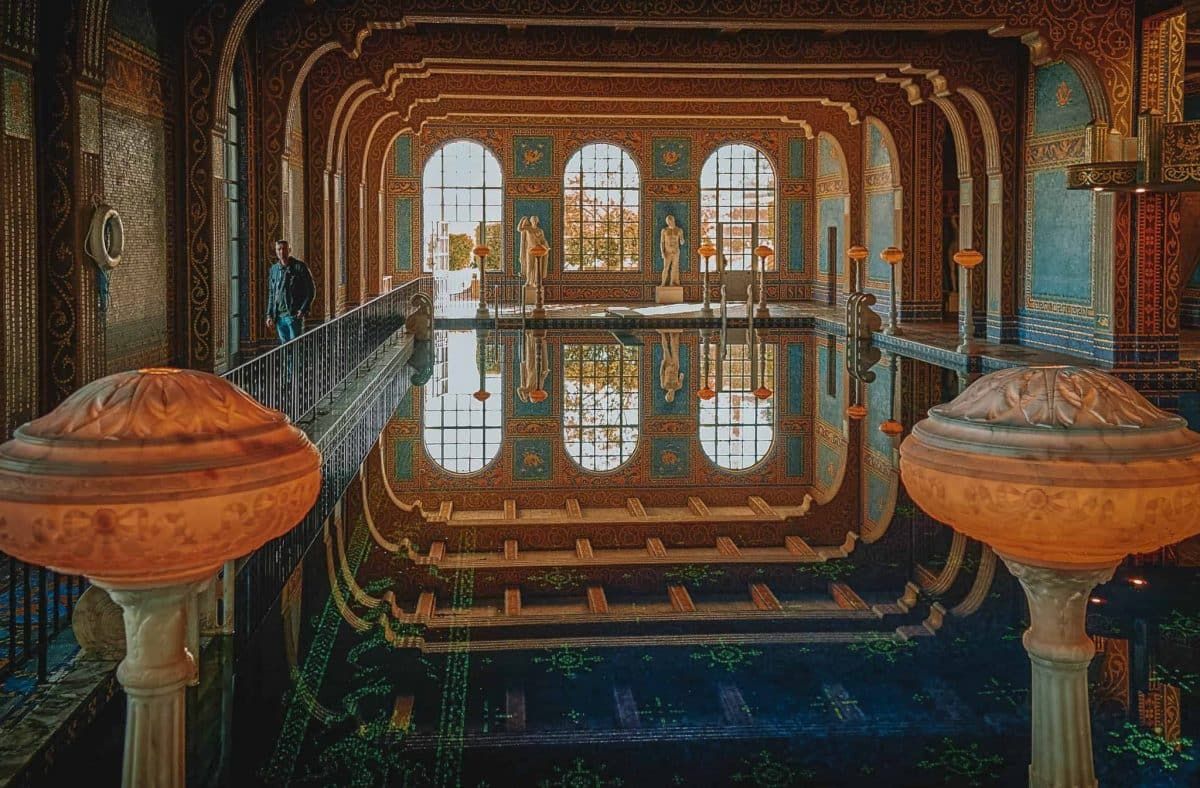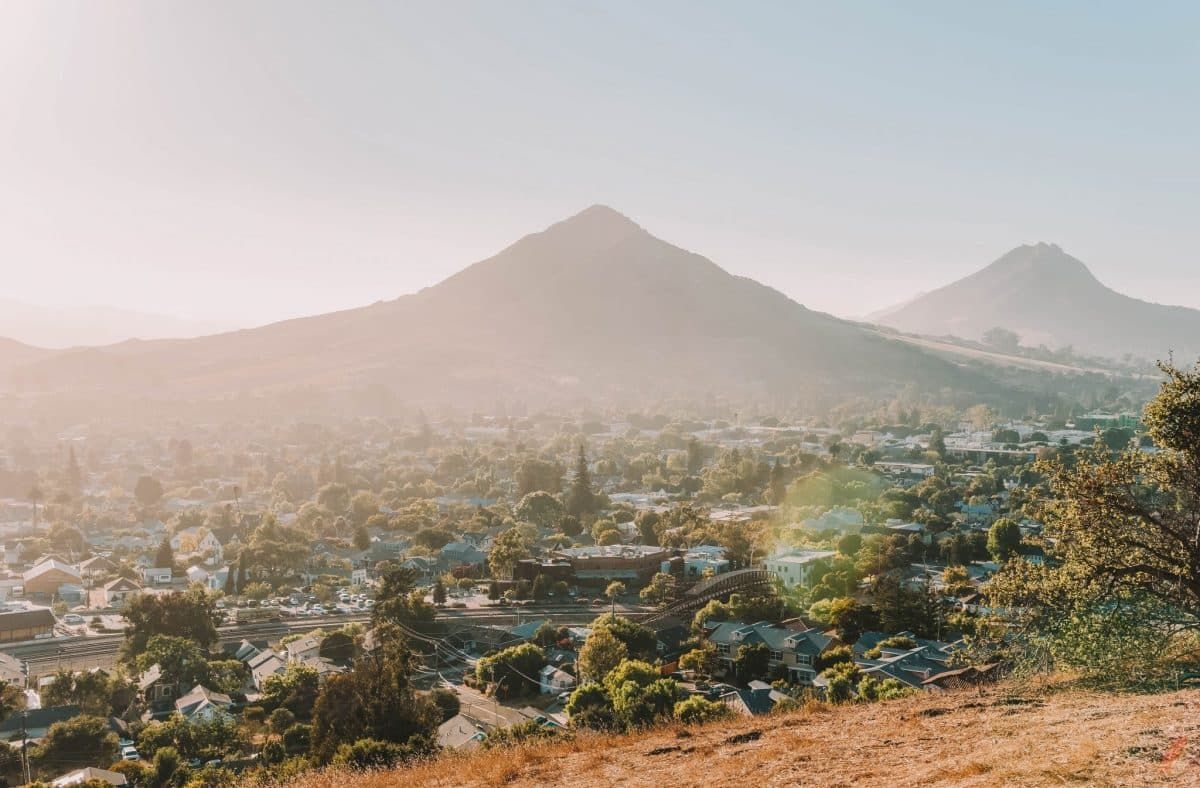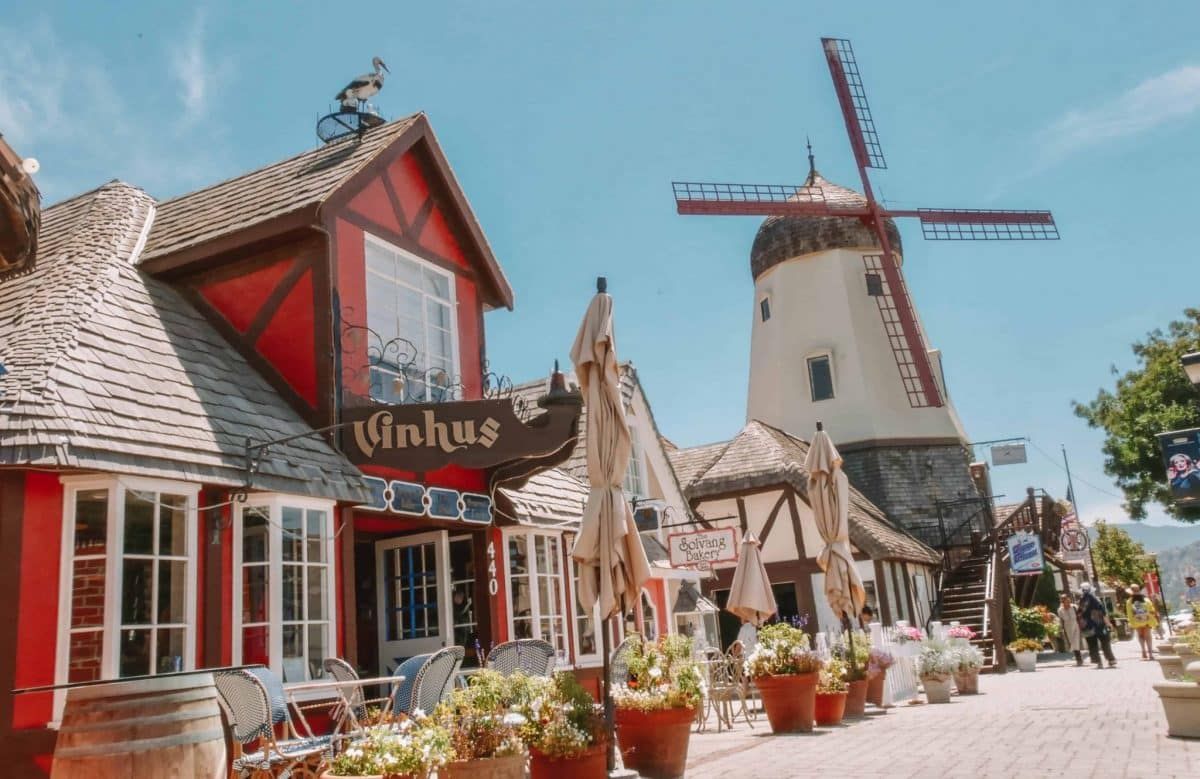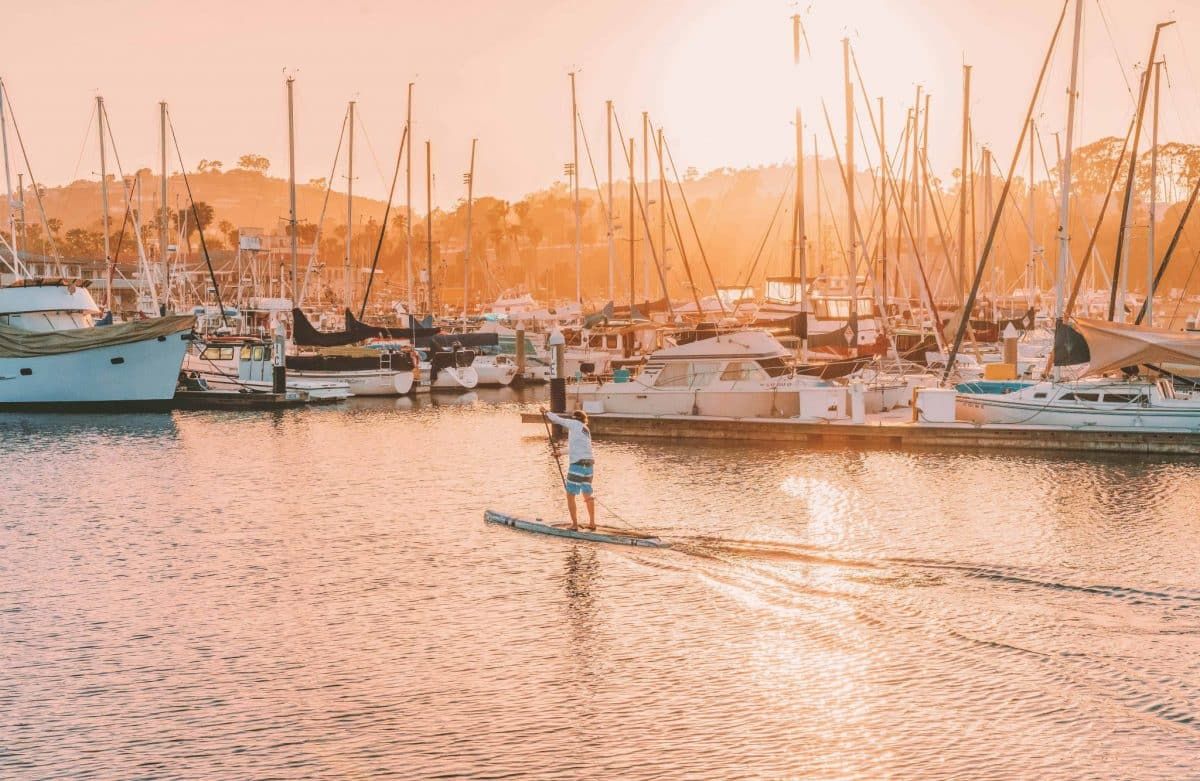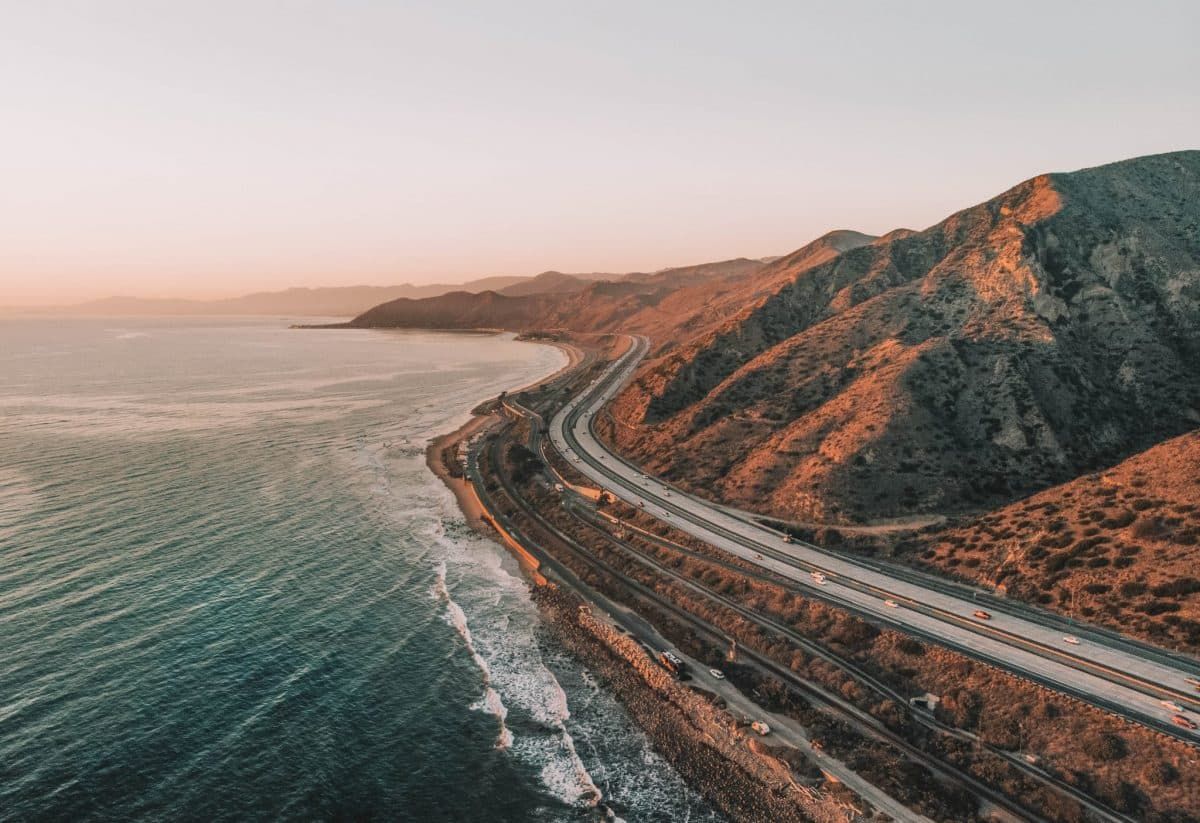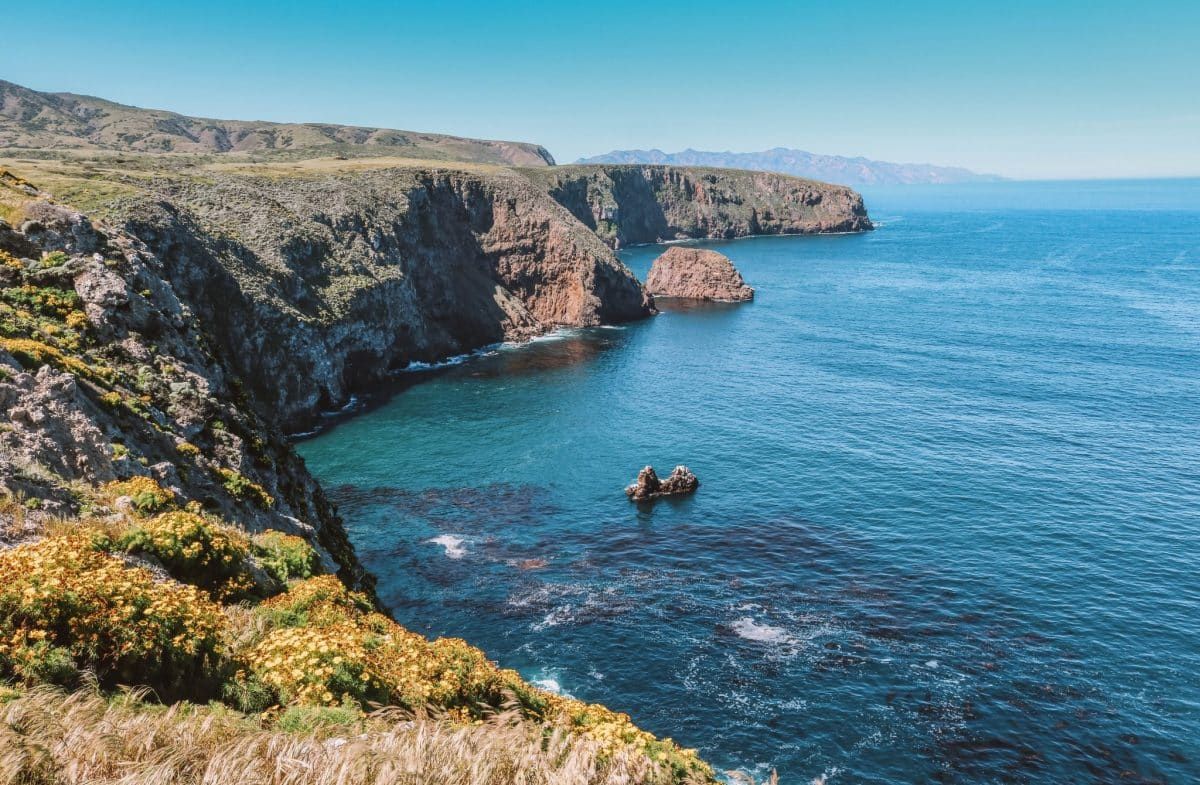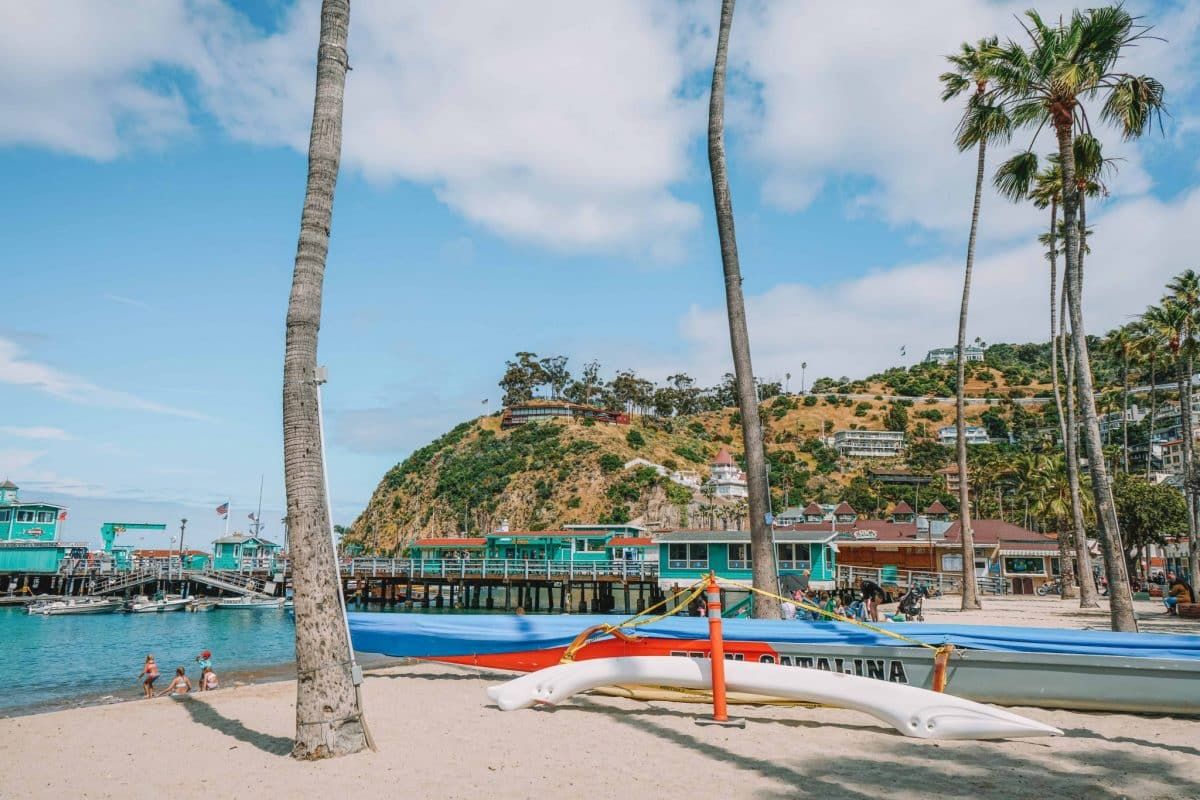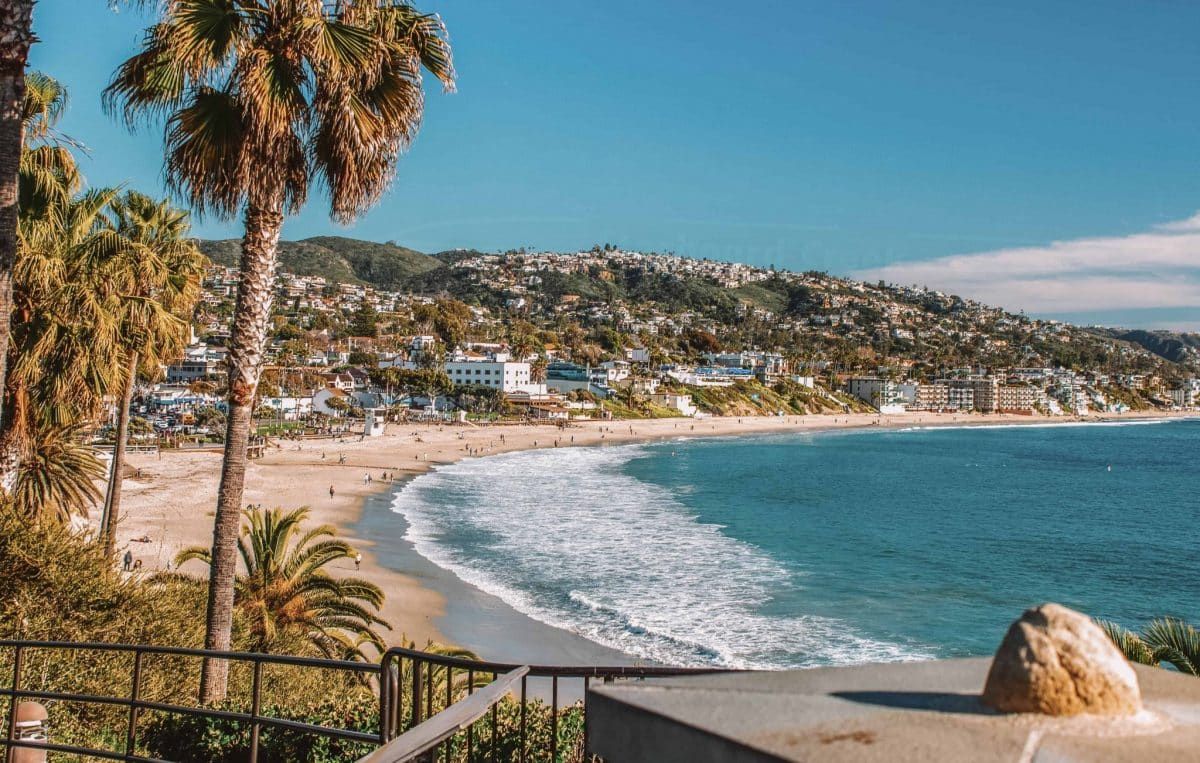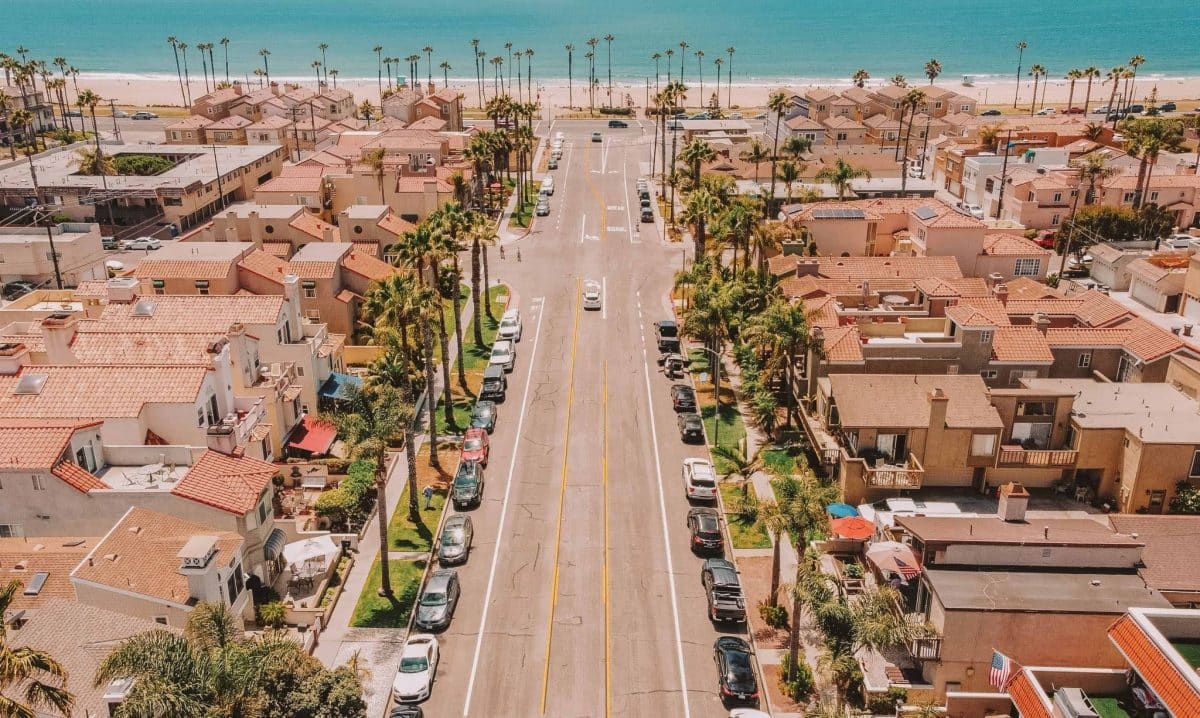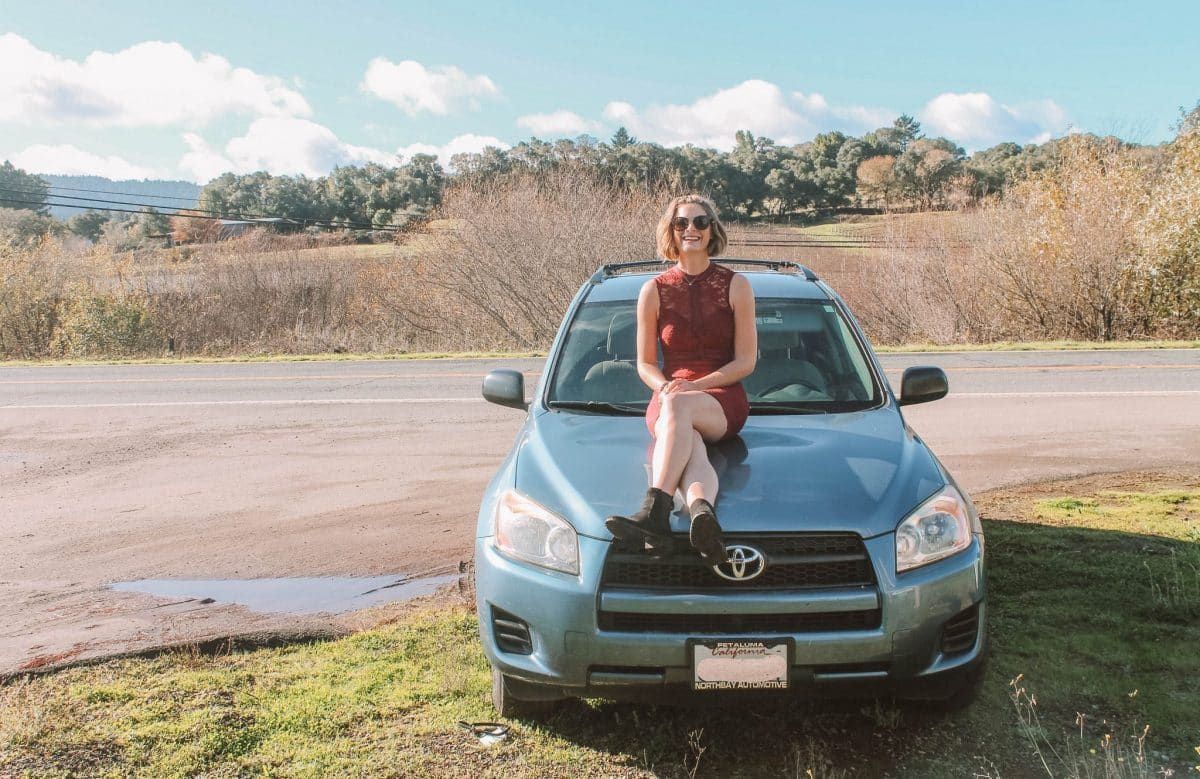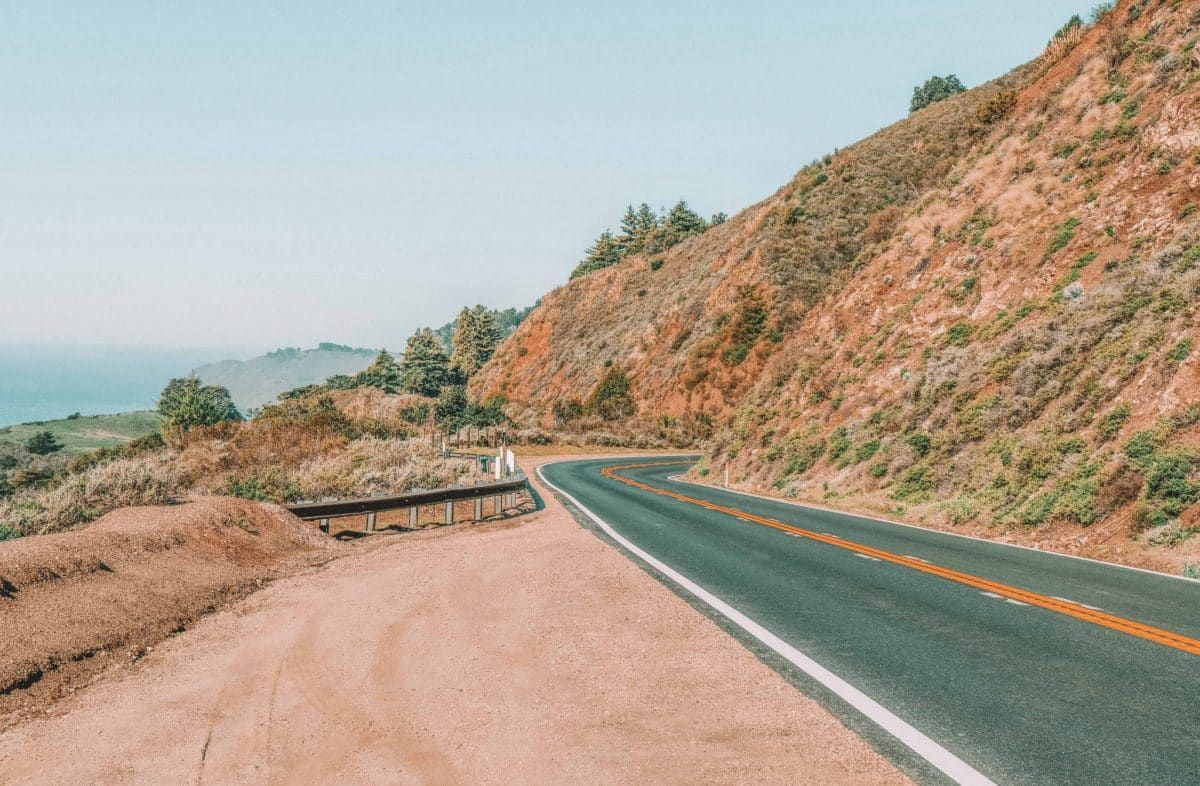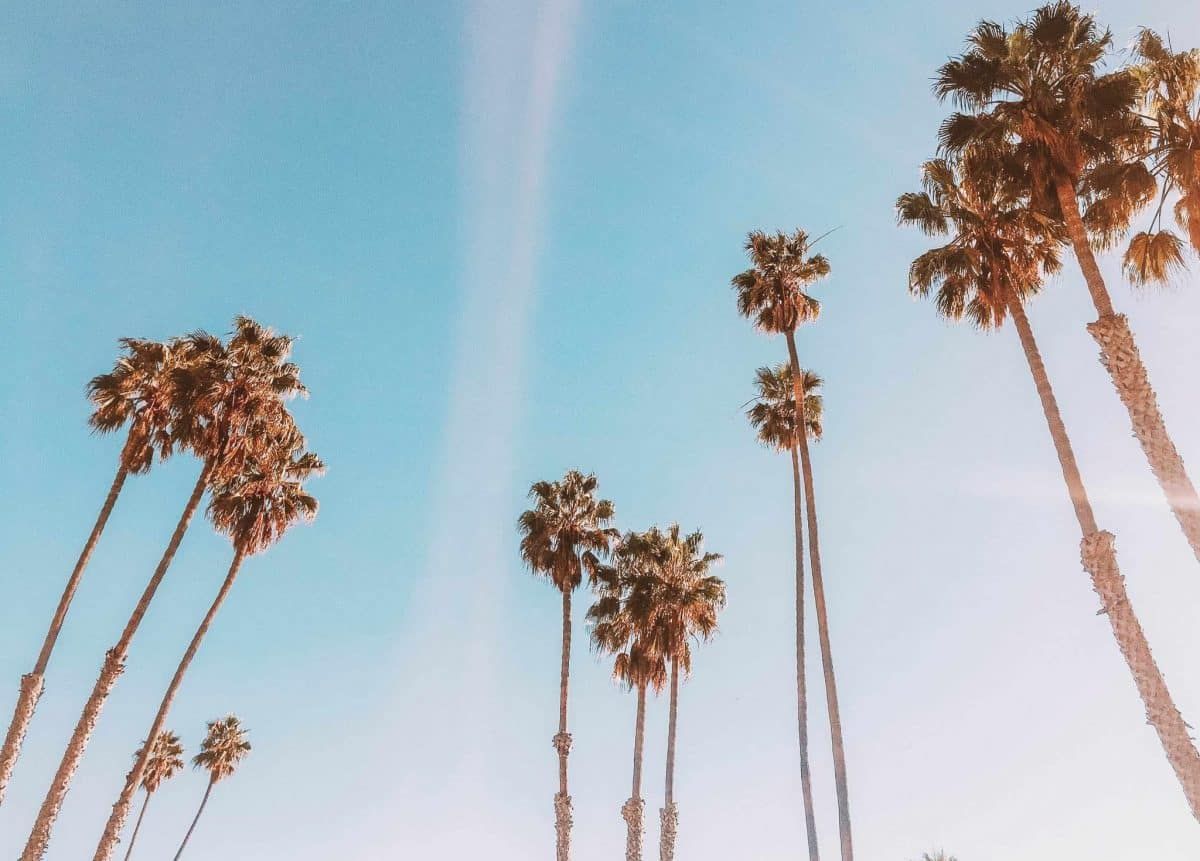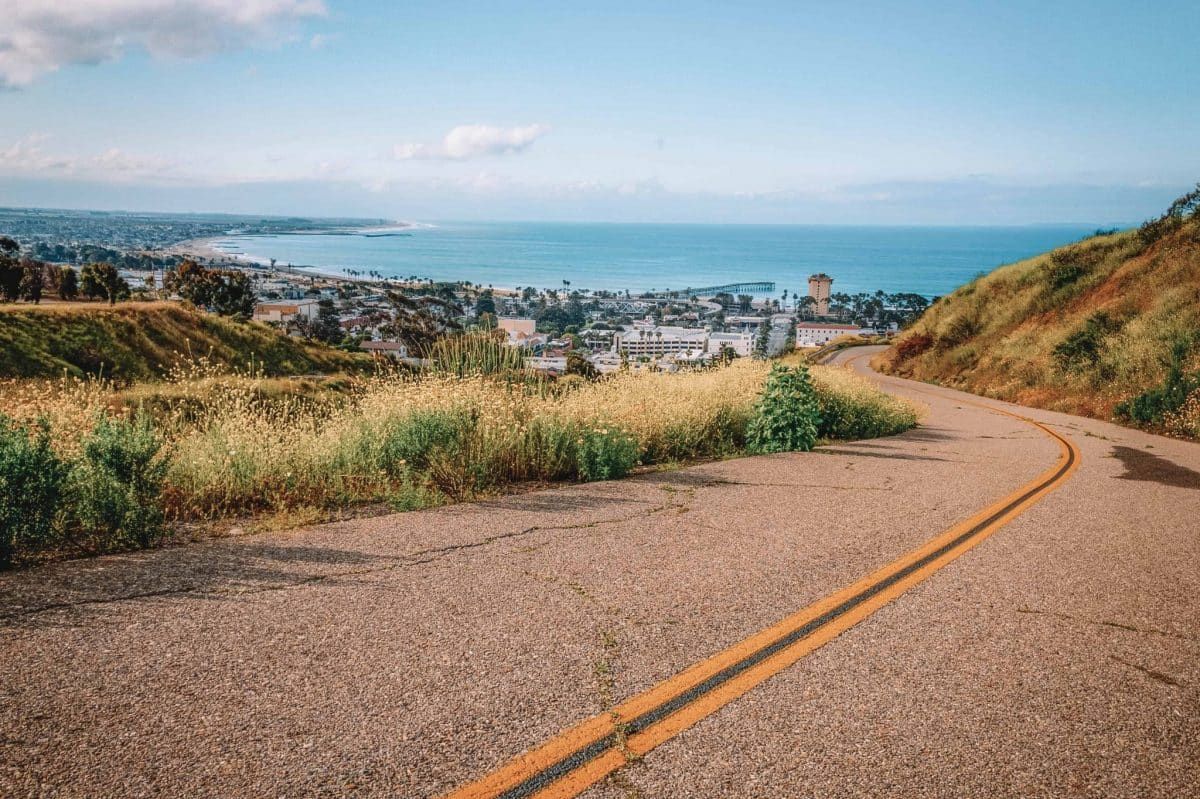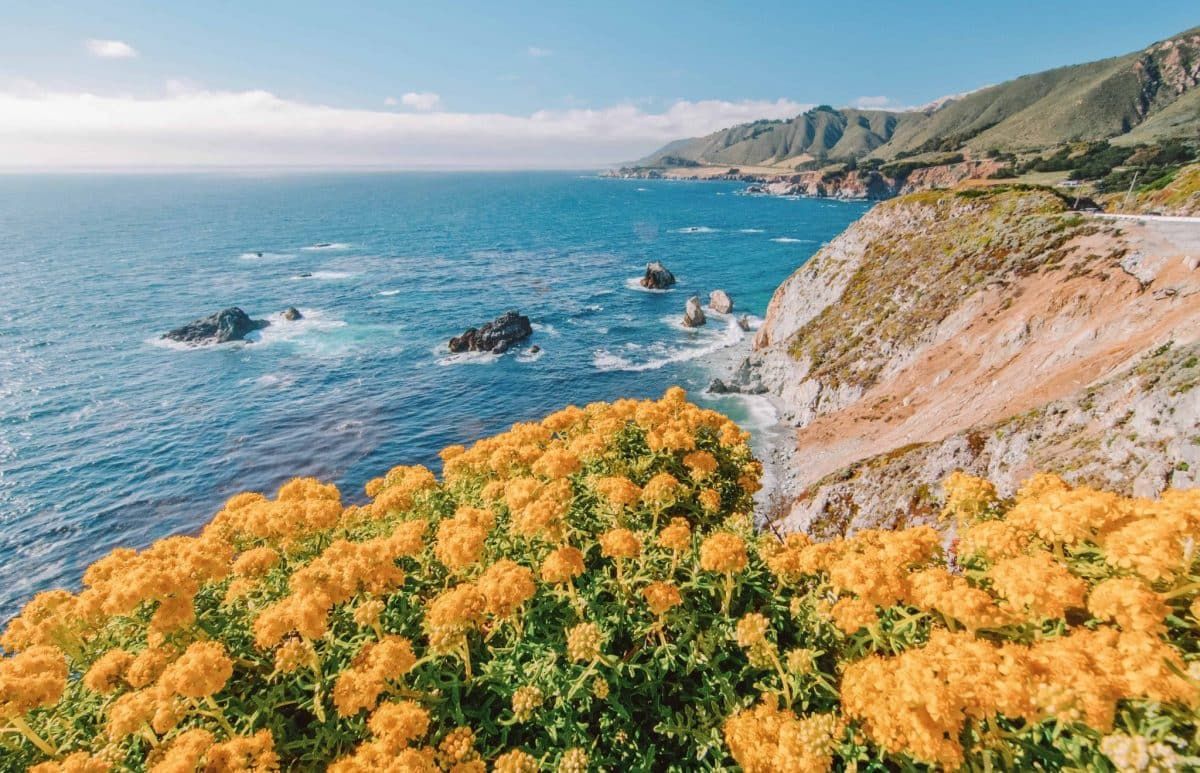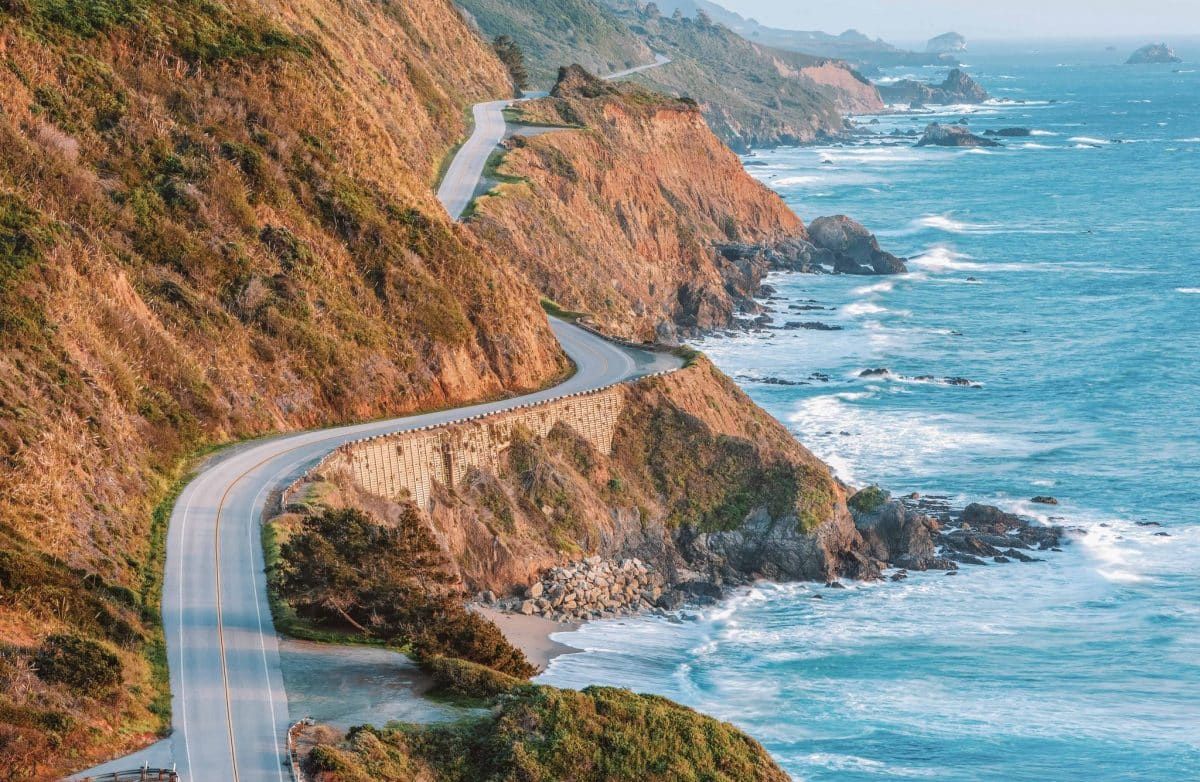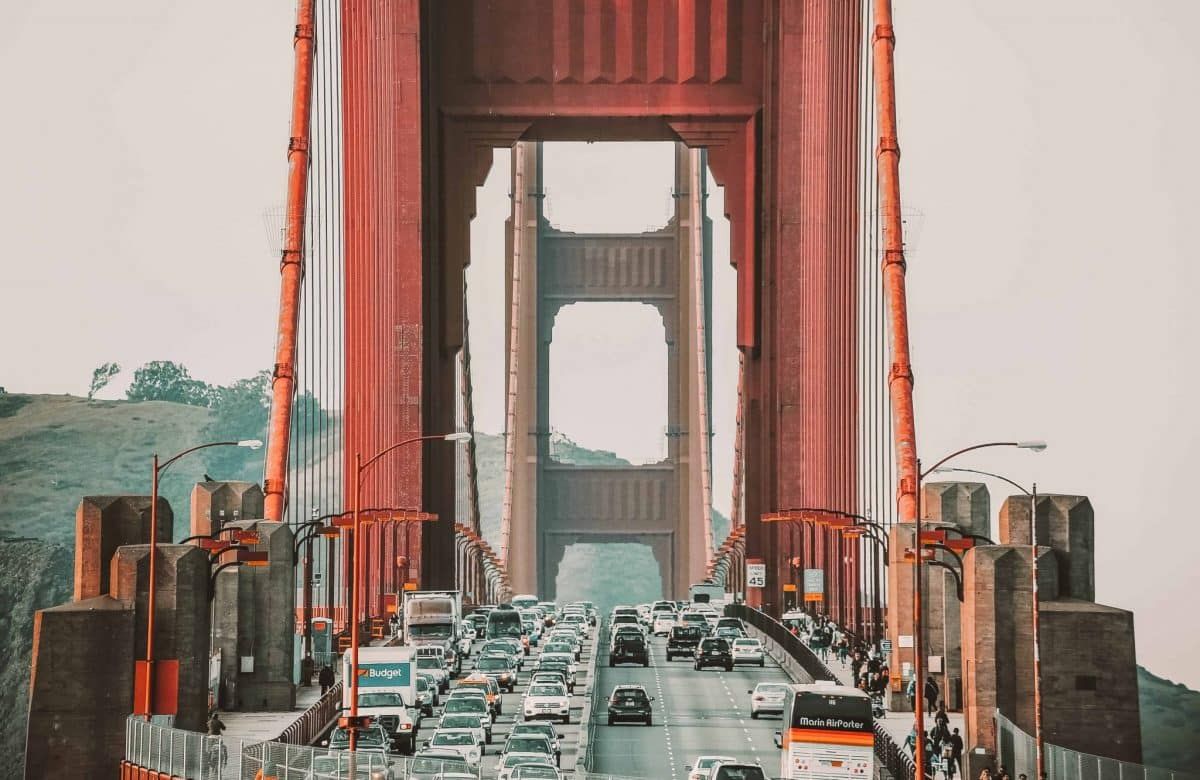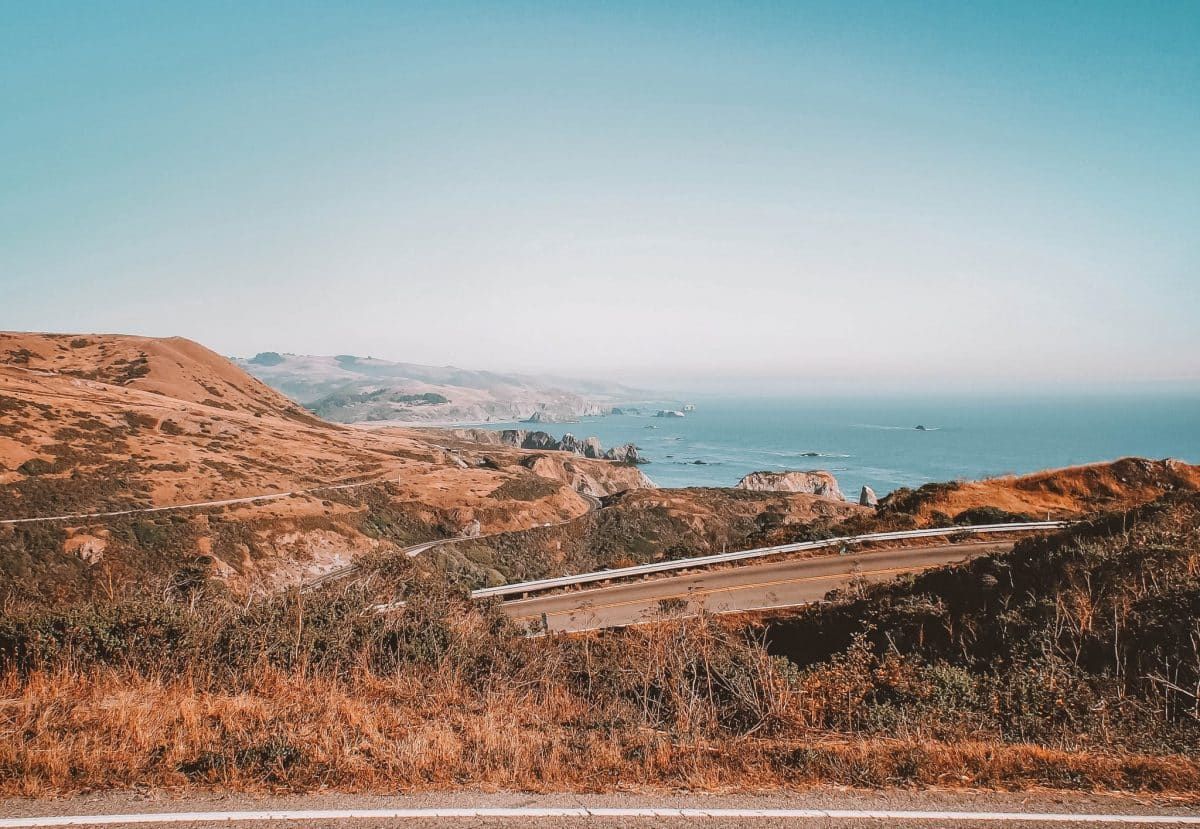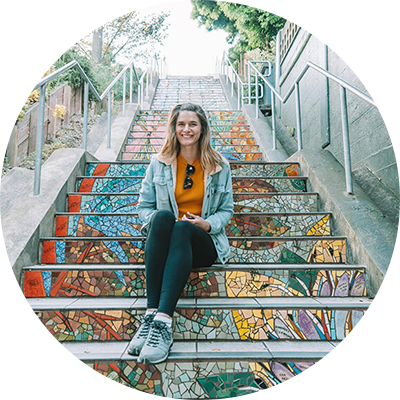The perfect Pacific Coast Highway Road Trip, including where to stop, eat, and stay. Plus, four sample itineraries you can use for inspiration!
When I was abroad and missing California, the first image that would come to mind besides seeing my friends and family was the Pacific Coast Highway.
The reason? It’s the most beautiful drive I’ve been lucky enough to experience multiple times in my life.
To me, it also represents some of my favorite aspects of California – stunning beaches, charming seaside towns, metropolitan cities, lush redwood forests, views for days, and a variety of landscapes and terrain.
Road tripping the Pacific Coast Highway is one of those bucket list items that everyone should experience at least once in their life (if not half a dozen times).
And there’s so much to see along the PCH that you could have a very different trip each time you drive it, depending on what you want to focus on.
As someone who grew up in California and who has been driving the Pacific Coast Highway for decades, I wanted to put together the ultimate Pacific Coast Highway road trip guide for anyone who wants to experience it for themselves.
In this guide, you’ll get the full rundown of all the places you could add to your Pacific Coast Highway trip, as well as some sample itineraries. Plus, where to stay and eat.
Get ready to enjoy the best parts of the California Coast – happy road tripping!
Note: this post contains affiliate links, which help run this site at no extra cost to you so I can keep providing free travel advice and tips.
How to Use This Pacific Coast Highway Guide
- It goes from north to south – I talk about this more below, but I find the PCH to be more scenic if you go from north to south because we drive on the right-hand side of the road in the US. This means you’ll be closer to the coastline and those stunning views if you head from the top of the state down. If you want to leave from Southern California and head north, just reverse this guide and start from the bottom.
- It’s broken up by California coastal regions and then by micro road trip legs within each region – I broke up this guide into three California coastal regions with recommendations for how long you should spend in each section. I also included mini road trips within each of these regions with recommendations for how long each one takes. Do one mini road trip leg at a time or combine 2-3 in one day, depending on how much you’re trying to fit in. If a particular road trip leg doesn’t sound that interesting to you, just skip it and move onto the next. I wanted to make this a flexible guide that gives you plenty of options to add to your overall Pacific Coast Highway road trip itinerary. If you want to just do a specific section of the PCH, you can skip to it from the table of contents above.
- There are more general Pacific Coast Highway itinerary guides and specific recommendations for where to stay and eat below – For those who want general itineraries and accommodation and food recommendations, I put all of those below to make your trip as easy to plan as possible.
Read our specific guides on where to stay and where to eat along the Pacific Coast Highway.
Pacific Coast Highway Road Trip: Fort Bragg to San Francisco
Recommended time: 2-5 days
Highlights: Redwood trees, lighthouses, rugged coastlines and beaches, fewer crowds, plenty of hiking and camping opportunities.
Where to Eat: Little River Inn Dining Room (Mendocino), The Marshall Store (Near Tomales Bay), Burma Superstar (San Francisco).
Where to Stay:
- Hotels: Brewery Gulch Inn (Mendocino), The Inn at the Tides (Bodega Bay), Pelican Inn (Muir Beach), Stanyan Park Hotel (San Francisco)
- Airbnbs: Mendocino, Tomales Bay, Point Reyes, San Francisco
- Campsites: Russian Gulch State Park, Wright’s Beach Campground, Point Reyes National Seashore
Starting just south of Leggett, in the Fort Bragg and Mendocino area, you’ll drive down the coast towards San Francisco. This is the quietest and calmest part of the Pacific Coast Highway with less traffic and people.
Along the way, you’ll come across old logging towns, redwood forests, lighthouses, and natural beauty in every direction.
You’ll end in eclectic San Francisco, a city you can explore for a couple of days or pass through on your way to the Central Coast.
Get your FREE California Travel Planner – including printable checklists and my favorite two-week itinerary for the state.
Fort Bragg to Mendocino
Distance: 15 minutes of driving (10 miles)
Recommended Time: 2 hours – 1 day
Fort Bragg to Mendocino is the shortest stretch in this guide, but I made it its own PCH road trip leg because there’s so much to see around Mendocino County.
If you can spend the night in Mendocino, that’s ideal. Otherwise, try to spare a few hours to fit in the following sights before you make your way further down the coast.
- Glass Beach – This unique beach was once a trash dump for local residents until the 1960s. Over the years, the thrown out glass has transformed into smooth glass pieces that cover the beach. Unfortunately, Glass Beach isn’t quite as grand as what it used to be 10 years ago since so many tourists visit and take glass with them (please don’t do this!), but it’s still a cool place to stop at. Plus, there are tide pools nearby.
- Downtown Fort Bragg – Fort Bragg used to be a military garrison and then a lumber town and you can still feel the aged layers of this place as you walk through its historic downtown area. Grab some Cowlick’s Ice Cream while you’re there and maybe check out the Guest House Museum if you want to learn more about Fort Bragg’s history. And if you have the time, I’d definitely recommend hopping on the Skunk Train or going Railbiking through the forest. It’s a very Fort Bragg experience.
- Pomo Bluffs Park – This 25-acre park is a good place to stretch your legs and get in some breezy walks alongside stunning Pacific Coast views.
- Mendocino Coast Botanical Gardens – A refreshing and relaxing stop where you can explore canyons, coastal bluffs, wetlands, and a pine forest. Right now, they’re asking all guests to book online reservations ahead of time as they’re not selling tickets onsite.
- Point Cabrillo Light Station – If you’re not sick of history and coastal views yet, make a stop at Point Cabrillo Light Station. Built in 1909, the lighthouse features a museum and a view that takes in over 270 acres of rugged bluffs, coves, and the Pacific Ocean. And if you really want to get into the historic spirit, you can even spend the night in one of the lighthouse keeper cottages.
- Russian Gulch State Park – One of my favorite California state parks that features an art deco bridge and a hike to a waterfall in the forest.
Once you get to Mendocino, you’ll find a welcoming seaside community that feels miles away from the bigger cities down south. This is a great area to spend the night at a bed and breakfast or camp at one of the many parks nearby.
While you’re in Mendocino, make sure to visit Mendocino Headlands State Park and Portuguese Beach then explore the many local boutique shops in downtown Mendocino and grab a drink at Dick’s Place.
If you’re looking for more things to do in the area, check out my top picks for what to see in Mendocino.
Mendocino to Point Reyes National Seashore
Distance: 3.5 hours of driving (132 miles)
Recommended Time: 1-2 days
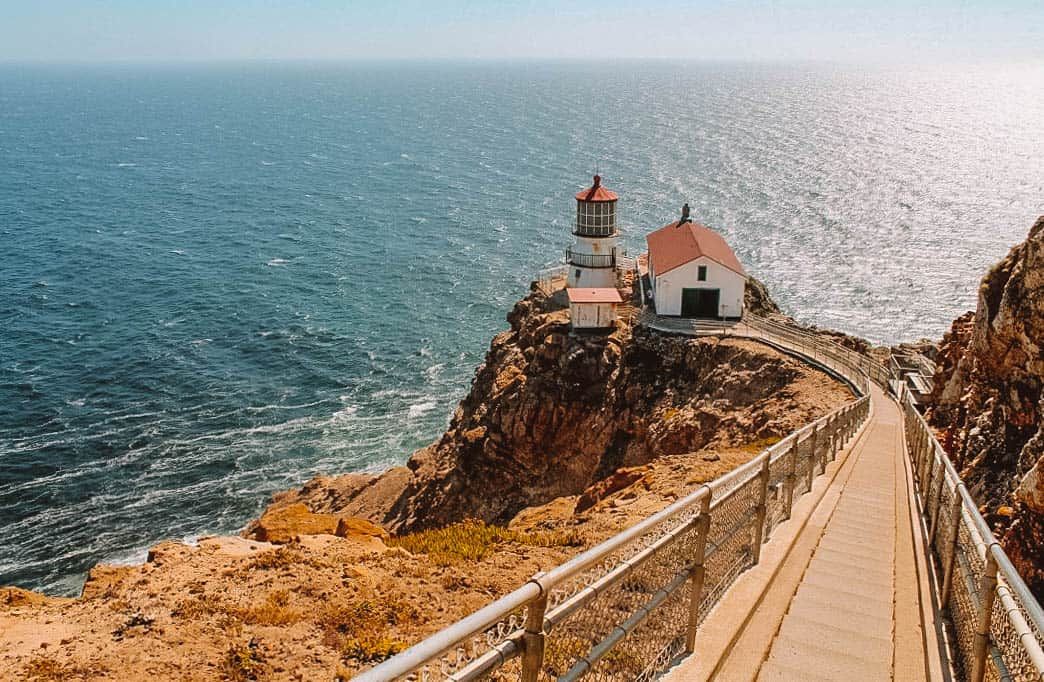
The drive from Mendocino to Point Reyes has some of the most unique sights on the North Coast.
This is the section I’d recommend spending the most time in to really take in the beauty of the Northern Pacific Coast Highway, as well as my two favorite spots – Point Reyes and Tomales Bay.
- Point Arena Lighthouse – Another must-see lighthouse on the North Coast. The 360-degree views from the top balcony are worth the 145 steps you’ll have to climb to get up there. Check ahead to see what times you can hop on their daily tower tour.
- Bowling Ball Beach – Also known as Schooner Gulch State Beach, this is a unique stop that features bowling ball-shaped rocks that are millions of years old. Just make sure you time your visit during low tide when the rocks are most visible.
- Fort Ross – A California State Historic Park that was once a bustling Russian-American settlement in the 1800s. There are historic buildings and replicas to walk around and some short trails to add to your itinerary if you want.
- Wright’s Beach & Duncan’s Landing Overlook – If you’re looking to camp, Wright’s Beach has one of the most popular campsites on this stretch of the coast. Otherwise, enjoy a picnic on the beach before heading over to Duncan’s Landing Overlook to take in those Pacific Ocean views.
- Bodega Bay – Most famous for being the filming location for Alfred Hitchcock’s 1963 film, “The Birds,” Bodega Bay is a pretty seaside community that features uncrowded beaches and a good hiking area called Bodega Head. At the very least, I’d recommend stretching your legs at Bodega Head, especially if you’re visiting in the spring because the wildflowers are beautiful.
- Tomales Bay & Marshall – A little further down the coast, you’ll come across Tomales Bay and Marshall where you can try some of the freshest oysters in California. There are two famous oyster stops in the area – Hog Island & The Marshall Store. I’d recommend grabbing lunch at The Marshall Store since it’s more of a restaurant where they cook the oysters for you. Hog Island is where you can purchase raw oysters that you need to shuck yourself (something I learned the hard way on my last visit there when I thought I was getting ready-to-eat oysters). This is also an ideal area to stay the night if you’re looking to break up the trip down to San Francisco. Tomales Bay is where you can do night kayaking around bioluminescent plankton and the 9.4-mile Tomales Point Trail is one of the most scenic hikes in the area. Not to mention, you could spend a full day at Point Reyes National Seashore alone, which is also nearby.
- Point Reyes National Seashore – Only an hour from San Francisco, this beautiful tucked away park has a good combination of history, views, and wildlife. If you’re looking for a long hike, tackle the 11-mile hike to Alamere Falls. Otherwise, spend some time driving around to the different historic and unique sights, like the Point Reyes Lighthouse and the Cypress Tree Tunnel, and keep your eyes peeled for the park’s resident tule elk.
Point Reyes National Seashore to San Francisco
Distance: 1 hour of driving (35 miles)
Recommended Time: 5 hours – 2 days
This is your last leg before you get to your first big city on your PCH road trip – San Francisco. Soak up more coastal views and visit some of the most popular redwoods in California at Muir Woods National Monument.
- Stinson Beach & Muir Beach – These are two popular but scenic beaches near San Francisco that get crowded on summer weekends. Don’t miss the Muir Beach Overlook on your way down for more stunning coastal views.
- Muir Woods – Another popular place that’s usually crowded but worth a visit, especially if you go during the week. Muir Woods is a great place to see redwoods right next to San Francisco. Just make sure you book a parking reservation online ahead of time.
- Marin Headlands – Similar to Point Reyes, Marin Headlands offers a good variety of historic sights, beaches, coastal views, and hiking trails. There’s a lot to see at the Marin Headlands, but a few must-see stops include Battery Spencer, Point Bonita Lighthouse, and Rodeo Beach.
From the Marin Headlands, you’ll make your way over the Golden Gate Bridge to arrive in San Francisco.
This is a good place to stay one to three nights with the bountiful accommodation options and how much there is to see and do in San Francisco.
If you’re looking to see things that are mostly along the Pacific Coast Highway, don’t miss visiting the Presidio, grabbing dim sum in the Richmond neighborhood, walking through Golden Gate Park, exploring Haight-Ashbury, and taking a photo in front of the 16th Avenue Tiled Steps.
If you have more time in the city than just a quick drive through, check out my list for the top things to do in San Francisco.
Pacific Coast Highway Road Trip: San Francisco to Santa Barbara
Recommended time: 3-7 days
Highlights: Coastal drives, elephant seals, redwoods, beaches, diverse marine life.
Where to Eat: Taco Bell (Pacifica), Sam’s Chowder House (Half Moon Bay), El Palomar (Santa Cruz), Riva Fish House (Santa Cruz), Nepenthe (Big Sur), Shine Cafe (Morro Bay), McConnell’s Ice Cream (Santa Barbara), Santa Barbara Shellfish Company (Santa Barbara).
Where to Stay:
- Hotels: HI Pigeon Point Lighthouse Hostel (Pescadero), Bella Notte Inn (Santa Cruz), Fernwood Resort (Big Sur), Madonna Inn (San Luis Obispo), Hotel Santa Barbara (Santa Barbara)
- Airbnbs: Half Moon Bay, Carmel-by-the-Sea, Cambria, Morro Bay, Santa Barbara
- Campsites: Henry Cowell State Park, New Brighton State Beach, Pfeiffer Big Sur State Park, Morro Bay State Park (read our guide to Morro Bay camping and Big Sur camping)
If there’s one part of the coast to include in your Pacific Coast Highway itinerary, it’s the Central Coast between San Francisco and Santa Barbara.
This is the most popular part of the Pacific Coast Highway and the section I’d recommend if you’re short on time and only want to see the main highlights.
There are four driving sections within this part of the coast that I’d recommend focusing on to really soak it up to the fullest.
The Big Sur area will be the biggest draw with its golden-hued cliffs, aquamarine waters, and instagram-famous Bixby Creek Bridge and McWay Falls.
However, you won’t want to miss out on the unique attractions that the other parts of the coast have to offer as well because there are many within these 363 miles.
San Francisco to Santa Cruz
Distance: 1.5 hours of driving (73 miles)
Recommended Time: 3 hours – 2 days
The Pacific Coast Highway drive from San Francisco to Santa Cruz may be short but it packs in a lot of quick stops and beautiful viewpoints along the way.
One of the best aspects about this section of the Pacific Coast Highway is how stunning the views are from the car.
So, although there may not be as many “official” stops, prepare to jump out a lot to take pictures or discover a hidden beach or two when you come across them.
- Pacifica – Once you leave San Francisco, your first stop will be Pacifica. This popular surfing destination is also one of the foggiest places in the Bay Area so don’t be surprised if you arrive to overcast skies. In Pacifica, you can hike out to the views at Mori Point and maybe grab a bite to eat at the fancy Taco Bell. It’s considered by some to be the nicest Taco Bell in the world (take that as you will).
- Half Moon Bay – On your way down to Half Moon Bay, stop at Mavericks Beach. It’s not only a pretty beach but has a lot of history to it as well. This is where the invite-only Mavericks Surf Competition used to take place each year because of the huge swells that come through here in the winter. The competition doesn’t run anymore but it’s still a cool spot to stop at, especially if you’re into surfing. Once you get to Half Moon Bay, walk along the Coastside Trail for a bit or simply peruse the shops and restaurants in the small downtown area along Main Street. This is also a great place to grab a fresh seafood lunch from Sam’s Chowder House if you’re hungry.
- Pigeon Point Lighthouse – A little further down the coast, you’ll find Pigeon Point Lighthouse. Built in 1871, this is the tallest lighthouse on the West Coast of the US with a scenic viewpoint that should be added to any California road trip. If you call ahead, you can hop on one of their 30-minute historic tours around the lighthouse and its grounds.
- Año Nuevo State Park – A beloved state park just up the coast from Santa Cruz, I used to go to Año Nuevo on field trips back in elementary school. This is one of the best places on the California Coast to see elephant seals in their natural habitat. The best times to visit the park are either April through November for the molting season (where the seals shed their outer skin layer) or December through February for the breeding season.
- Davenport – Before you reach Santa Cruz, make a stop in Davenport to explore its hidden windswept beaches and cute downtown area. Shark Fin Cove and Panther Beach are two favorite local beaches to visit on your way into Santa Cruz.
And finally, you’ll reach Santa Cruz to end this leg of the Central Coast.
I might be a tad partial to Santa Cruz because it’s my hometown, but if you’re looking for a quintessential California beach town, Santa Cruz is it.
Spend at least an afternoon if not a couple of days exploring all that Santa Cruz has to offer.
A few spots that shouldn’t be missed include the Santa Cruz Beach Boardwalk, West Cliff Drive, Downtown Santa Cruz, Henry Cowell Redwoods State Park, and Capitola Village.
If you’re looking for a full guide to Santa Cruz, read through my tips on what to do in Santa Cruz, as well as my guides to the best beaches and the best hikes in Santa Cruz.
Santa Cruz to Big Sur
Distance: 2.75 hours of driving (121 miles)
Recommended Time: 1-3 days
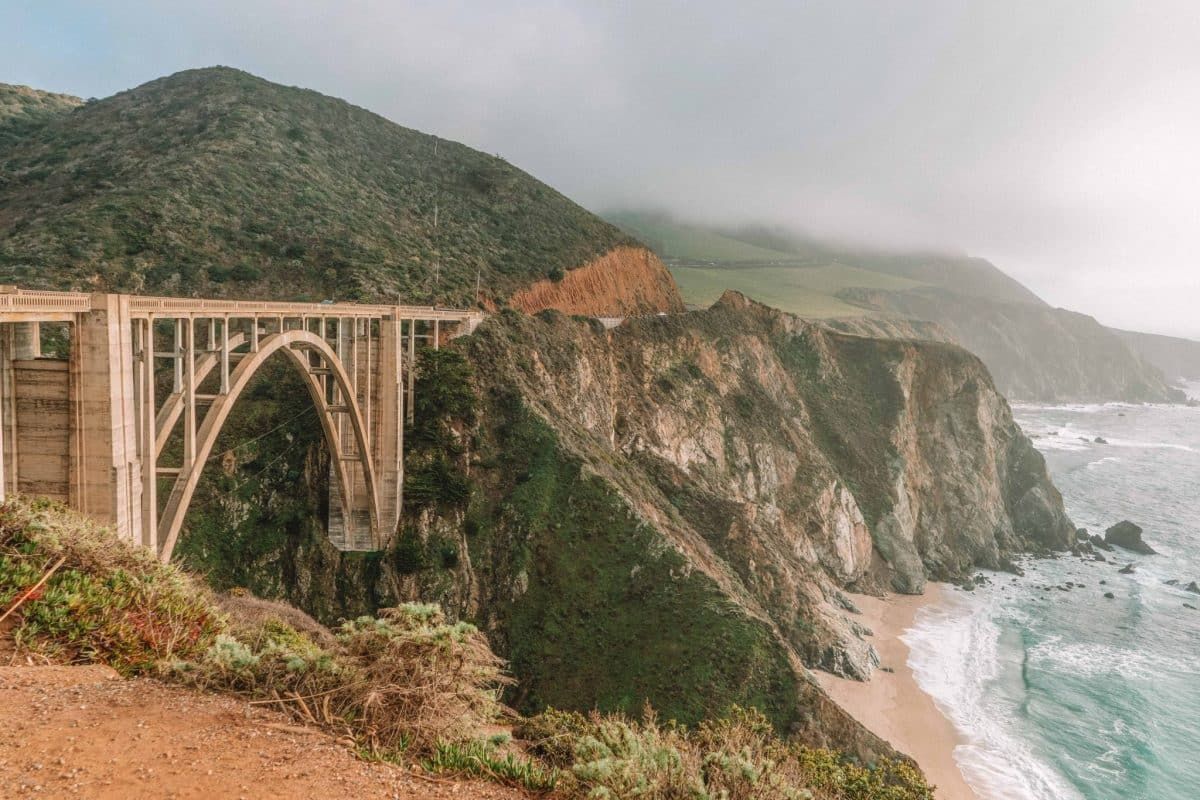
The section of the Pacific Coast Highway from Santa Cruz to Big Sur is my absolute favorite in terms of natural beauty and the endless coastal sights.
This is where the views start to really get jaw-dropping, the cliffs a little higher, the road more winding, and the water more aquamarine.
This part of the coast has a good mix of cities but also more undeveloped natural areas.
You’ll start to feel the lack of development (at least by California standards) once you get past Monterey and the 17-Mile Drive and start to enter into the Big Sur area.
These are the stops I’d recommend including in your Pacific Coast Highway itinerary from Santa Cruz to Big Sur.
- Moss Landing – Not too far past Santa Cruz, you’ll come across Moss Landing. It might not look like much initially with a large power plant front and center, but this is where you’ll find Elkhorn Slough. Elkhorn Slough is a protected marine habitat for birds and sea otters and an ideal place to go kayaking. You can either rent kayaks or go on a tour with Monterey Bay Kayaks.
- Monterey – Next, you’ll want to make a stop in Monterey, another seaside community on the other side of the bay from Santa Cruz. Monterey is a little more upscale than Santa Cruz and there’s a lot to see within its city limits. I’d recommend spending at least an afternoon here to go to the world-famous Monterey Bay Aquarium, walk around Cannery Row, and maybe grab a nice lunch at Old Fisherman’s Wharf.
- 17-Mile Drive – A road trip within a road trip, the 17-Mile Drive from Monterey to Carmel-by-the-Sea should definitely be added to your Pacific Coast Highway road trip down this part of the coast. The cost to do the drive is $10.50 per vehicle and you’ll want to grab a brochure when you enter so you don’t miss any stops. A few stops to include on your road trip are Spanish Bay Beach, The Restless Sea, Point Joe, China Rock, Seal Rock, and The Lone Cypress.
- Carmel-by-the-Sea – If you have time after the 17-Mile Drive, Carmel-by-the-Sea is a scenic coastal town that’s fun to walk around. This could be another good place to grab a late lunch if you didn’t eat in Monterey or to have a picnic at Carmel Beach.
- Point Lobos State Natural Reserve – Point Lobos is technically a part of Carmel-by-the-Sea but a stop in its own right. This is one of the most beautiful coastal parks I’ve been to in California, featuring a large tide pool area, sea stacks, sunbathing seals, and stunning tucked-away beaches and viewpoints. Don’t miss walking down to my favorite beach while you’re there, Gibson Beach, and taking in the views along the Bird Island Trail.
Once you leave Point Lobos State Natural Reserve, you’ll basically be in Big Sur. The Big Sur area is easily one of my favorite places in California and there is SO much to do and see here.
Spend at least a full day if not two to take in the viewpoints, local parks, and hidden beaches around the Big Sur Coastline. Big Sur hotels can be expensive so this would be a great place to camp if you’re on a budget or to splurge on a nice hotel for a night.
A few spots that shouldn’t be missed in Big Sur include Garrapata State Park, Pfeiffer Beach, Bixby Creek Bridge, McWay Falls, Nepenthe (for sunset cocktails or a nice meal), and Limekiln State Park.
Big Sur to Santa Barbara
Distance: 3.25 hours of driving (169 miles)
Recommended Time: 1-2 days
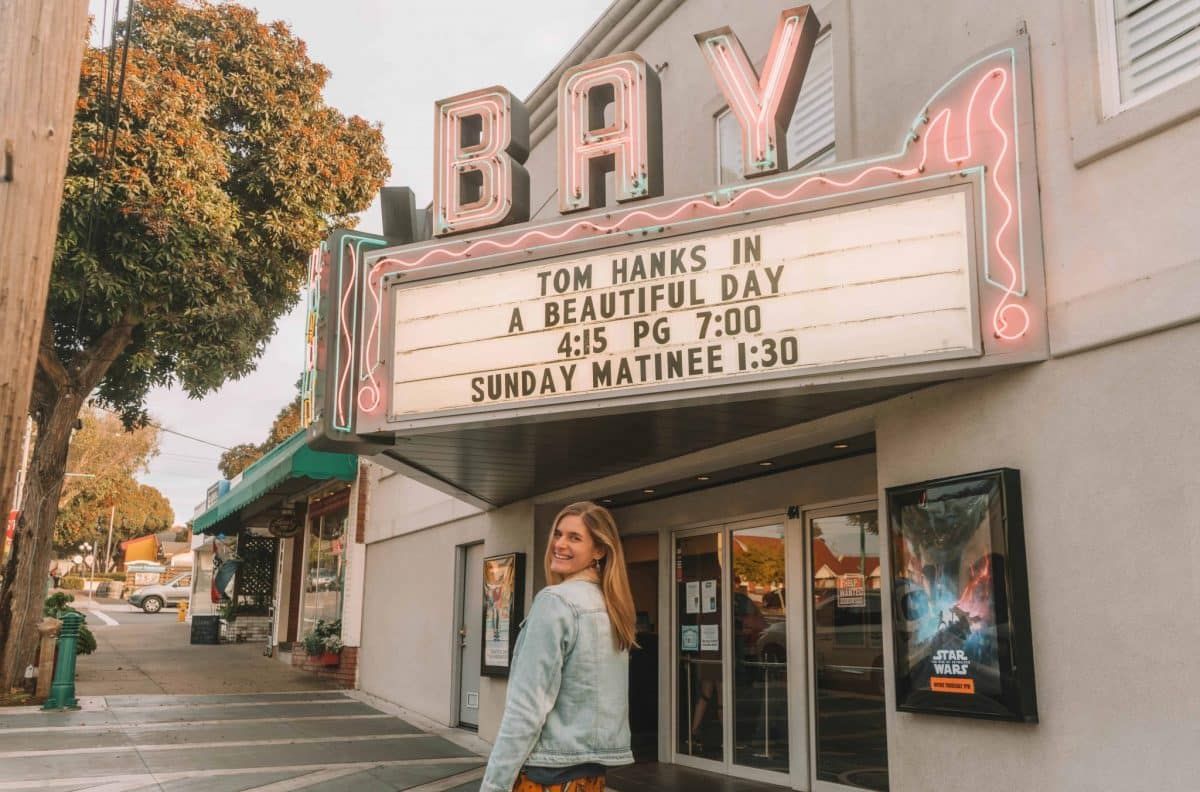
Although Big Sur gets a lot of attention on the Central Coast, the section of the Pacific Coast Highway from Big Sur to Santa Barbara is beautiful in its own right.
It features more small coastal towns, sand dunes, good local surf spots, a “castle,” and plenty of elephant seals. And you couldn’t end in a more beautiful place.
Santa Barbara is one of those underrated gems that many tourists pass over but there’s no other place like it on the California Coast.
- Point Piedras Elephant Seal Rookery – If you didn’t make a stop at Año Nuevo State Park up north or you’re simply looking to view more northern elephant seals (they are very cool animals), a stop at Point Piedras is a must. This windy beach in San Simeon is where a bunch of elephant seals stay during their breeding and molting periods. The best times to visit are in January (for births), February (mating), April-May (molting), or Sep-Nov (when young pups go out to sea). You can see the elephant seals at other times of the year too, just not at the same numbers as what you might find at these peak times.
- Hearst Castle – A bucket list stop on any Pacific Coast Highway road trip, Hearst Castle is a sight you’ll have to see for yourself to believe. This is California’s most famous mansion that once belonged to William Randolph Hearst, a rich early 20th-century newspaper tycoon. The full estate features 165 rooms, indoor and outdoor pools, gardens, and a random mix of decor, artwork, and antiques from various historical periods. You’ll need to book a 1-2-hour tour to view the mansion.
- Optional Detour: Paso Robles – If you have an extra afternoon to another full day, Paso Robles is a scenic place that’s slightly inland from the coast. Paso Robles is especially well-known for its stellar wine scene and olive groves, so I’d recommend stopping at a couple of wineries for tastings before exploring the downtown area.
- Morro Bay – If you’re looking for a small coastal town that’s somehow not too touristy yet, Morro Bay is an ideal stop. The city’s most striking feature is Morro Rock, a 576-foot rock that was part of a volcanic peak 23 million years ago. When you’re walking to the rock and back, you’ll want to keep your eyes peeled for otters in the water. The last time I was in Morro Bay, I saw a bunch of otters with their babies and it was extremely cute. Besides Morro Rock, Morro Bay has a lot to offer with its waterfront Embarcadero, beaches, water activities, and cute downtown area. Don’t miss a meal at the healthy Shine Cafe if you’re hungry. And nearby, there’s a tucked away state park called Montaña de Oro if you’re looking for a short hike to stretch your legs before hopping back in the car.
- San Luis Obispo – A short drive from Morro Bay, you’ll come across San Luis Obispo. This college town can feel more upscale at times but it also maintains that laid back vibe that most Central California cities seem to have. In SLO (pronounced “slow”), as locals call it, you’ll find wineries, one of the best farmers markets in California (on Thursday nights), a historical downtown area, and a California Mission. If you’re up for some strenuous exercise, do the 3.4-mile hike up to Bishop Peak for sweeping views for miles. And if you’re looking for a quirky place to stay along the Pacific Coast Highway, San Luis Obispo is also where you’ll find the colorful Madonna Inn.
- Pismo Beach – Heading back towards the coast along Highway 1, you’ll come to Pismo Beach. This seaside town is known for its monarch butterfly grove, long pier, beaches, and coastal views in every direction. Don’t miss stopping at Shell Beach and Pismo City Beach while you’re in town.
- Oceano Dunes – Just south of Pismo Beach, you’ll find some of the most expansive coastal sand dunes in California. This is the perfect place to rent ATVs (or do a tour if you’re not comfortable driving yourself) and get your adrenaline running as you soar across the dunes. You can also camp and go horseback riding on the beach. Note: The Oceano Dunes will be shutting down to off-roading vehicles starting in 2024, so after that date, you’ll only be able to explore the dunes by foot or horseback.
- Optional Detour: Solvang – Solvang is a worthwhile detour if you’re looking for unique places to add to your Pacific Coast Highway itinerary. The city was founded in 1911 by Danish Americans who wanted to bring a piece of their heritage to the California Coast. As you wander around the small downtown area, you’ll feel like you just stepped into a small Danish town in Europe, complete with Danish bakeries and windmills. You can read our guide on fun things to do in Solvang to get a better idea if it’s worth the stop for you.
And finally, you’ll end this leg of your Pacific Coast Highway road trip in Santa Barbara.
Santa Barbara is one of those places that feels like it came straight out of a glossy travel magazine.
There’s a bustling harbor, red rooftops and Spanish-style architecture everywhere you look, breathtaking sunsets, and impeccable beaches.
Santa Barbara is one of the prettiest cities you’ll come across on the Central Coast and it’s worth exploring fully. I’d recommend giving yourself at least an afternoon, if not a full day, to soak up the sights in town.
A few things that shouldn’t be missed include visiting Mission Santa Barbara, walking along State Street, grabbing ice cream from McConnell’s, and making a stop at Stearns Wharf and the beach.
Pacific Coast Highway Road Trip: Santa Barbara to Dana Point
Recommended time: 2-4 days
Highlights: Beaches, beach cities, coastal views, and good weather.
Where to Eat: Duke’s Malibu (Malibu), Bay Cities Italian Deli (Santa Monica), Flake (Venice), El Primo Tacos (Venice), George’s Greek Cafe (Long Beach), Mama D’s Italian Kitchen (Newport Beach), Sidecar Doughnuts & Coffee (Newport Beach), Nick’s Laguna Beach (Laguna Beach), Lupe’s (Dana Point).
Where to Stay
- Hotels: The Surfrider Malibu (Malibu), The Kinney (Venice Beach), The Queen Mary (Long Beach), Crystal Cove Beach Cottages (Newport Beach), Seaside Laguna Inn & Suites (Laguna Beach)
- Airbnbs: Malibu, Venice Beach, Laguna Beach
- Campsites: Leo Carrillo State Park, Crystal Cove State Park
Congrats! You’ve reached the last section of your Pacific Coast Highway road trip.
There may not be as many miles to cover on this part of your California road trip (although there will be plenty of traffic), but there’s a lot to see and do from Santa Barbara to Dana Point.
This stretch will give you iconic Southern California vibes with gorgeous weather, plenty of cities along the beach, and beautiful viewpoints.
There are two main sections I’d recommend including in this part of your Pacific Coast Highway itinerary – the Los Angeles beaches and Orange County beaches.
Let’s dive into each one!
Santa Barbara to Los Angeles
Distance: 3 hours of driving (113 miles)
Recommended Time: 1-2 days
The start of the southern section of your Pacific Coast Highway road trip, the leg between Santa Barbara and Los Angeles is all about beaches and beach cities.
There are some optional islands off the PCH that you can add to your itinerary too if you’re looking for a quick escape from the mainland.
This part of the coast is where you really start feeling the transition to Southern California weather, scenery, and culture as you make your way down to Los Angeles.
- Ventura – The drive to Ventura alone is a stunning way to start out this section of your PCH road trip. Be prepared for more seaside highway views and postcard-perfect scenery. Popular attractions in Ventura include visiting its beaches, such as San Buenaventura and Emma Wood, the picturesque Ventura Harbor Village, and the Ventura Pier.
- Optional Detour: Channel Islands National Park – If you’re looking to visit a national park off the Pacific Coast Highway, look no further than Channel Islands National Park. If you have an extra day or two, Ventura is a good jumping-off point to do a day trip to one of the closer islands in the park or an overnight trip. Ferries to the closer islands take about an hour from the mainland. I’d recommend visiting Santa Cruz Island since it has the most things to do for first-time visitors. You can even book a kayaking tour ahead of time to explore the sea caves once you arrive from the ferry.
Read our guides on how to plan an epic California national parks road trip and how to use the national park passport.
- Malibu – A little further down the coast, you’ll arrive in Malibu. This is a popular spot for the rich and famous to vacation and plenty of celebrities live here. This means it’s not super cheap for food or accommodation, but, luckily, there are still plenty of free or inexpensive activities to take advantage of in the city. Two of my favorite things to do in Malibu are to hit the beach and the hiking trails (and there are plenty of both).
- Santa Monica – A family-friendly destination that features a three-mile sandy beach and historic pier. The pier has a small amusement park as well, which can be a fun place to stretch your legs after the long drive. Santa Monica is the endpoint of the famous Route 66 in the US and there’s a sign you can snap a picture of at the pier.
- Venice Beach – Right next to Santa Monica you’ll discover Venice Beach, which has a very different vibe and culture. Venice is where you’ll find hippies, vegans, skateboarders, and an underlying counterculture feel that is artsy and colorful. The beach is beautiful, there are a number of healthy eateries to stop in for lunch, there’s an outdoor market along the boardwalk, and a bunch of street murals around town. If you have time, this is a good place to rent bikes to ride along the scenic Strand Bike Path. And before you leave, don’t miss checking out the gorgeous Venice Canals, which are a hidden slice of Italy tucked away in LA.
- Manhattan Beach – If you’re not sick of the LA beach culture yet, you can make a quick pit stop at Manhattan Beach. Here you can take in yet another pristine beach on this part of the Pacific Coast Highway. It’s a nice place to walk out to the pier to watch the surfers and visit a small aquarium.
- Long Beach – And finally, you’ll arrive at your last Los Angeles beach town in Long Beach. Known for being the hometown of the band Sublime (please play “Santeria” as you drive into town), Long Beach is a port city that’s home to a few sights. These include spots like the Naples neighborhood, Bluff Park, and the Downtown Waterfront district. And if you’re looking for a unique place to stay on this section of the Pacific Coast Highway, I’d recommend looking into The Queen Mary. The city is also a good jumping off point if you want to do a day trip to Catalina Island.
- Optional Detour from Long Beach: Catalina Island – Another island that’s easy to visit off the Pacific Coast Highway, Catalina Island takes around an hour to get to from Long Beach. If you have an extra day, do a five-hour day trip to enjoy some snorkeling and explore Avalon and its surrounding sights via golf cart. Read my full guide on how to do the perfect Catalina Island Day Trip.
Once you get to Long Beach, you’ll be at the end of this leg of your PCH road trip.
If you want to do a detour off the Pacific Coast Highway to explore the other parts of Los Angeles, anywhere from Santa Monica to Long Beach would be the place to do that.
A few sights that shouldn’t be missed in Los Angeles include the Hollywood Walk of Fame, Griffith Park, walking up to the Hollywood Sign, Universal Studios, and the Sunset Strip.
If you’re looking for more ideas, I wrote a whole post on 100+ Things to do in LA.
Los Angeles to Dana Point
Distance: 1.5 hours of driving (40 miles)
Recommended Time: 5 hours – 2 days
It’s hard to beat Orange County beaches. With Southern California’s perfect year-round weather and the number of rich people that live in Orange County, the beaches are pristine, well taken care of, and enjoyed by the droves.
Most beaches have small to medium-sized cities attached to them and these will be your main stops along this stretch of your PCH road trip.
These are the places I’d recommend for a quick stop along Highway 1 before making your way down to Dana Point.
And if you have more time in the area, check out my recommendations for the best things to do in Orange County.
- Huntington Beach – Known as “Surf City USA,” you can probably guess that Huntington Beach is a great place to go surfing or learn how to surf. If that’s not your thing though, there are plenty of other ways to enjoy an hour or two in Huntington Beach. While you’re in town, don’t miss the Huntington Beach Pier, Huntington Beach International Surfing Museum, and Bolsa Chica Ecological Reserve.
- Optional Detour: Disneyland & California Adventure – If there are two bucket list spots that are worth the detour off Highway 1, it’s Disneyland and California Adventure. These are two of California’s most famous amusement parks and, if you’ve never been to a Disney-themed park before, they’re a must-visit. If you want to do both parks, I’d recommend giving yourself two full days, one in each park. Otherwise, if you only have time for one, definitely experience the magic of Disneyland and save California Adventure for another time.
- Balboa Island – Making your way further down the coast, you’ll come across Balboa Island in Newport Beach. While you’re there, stop by the Balboa Island Fun Zone, take in the scenic views, and grab a frozen banana (and pretend you’re in Arrested Development). You can access this man-made island by bridge or ferry.
- Crystal Cove State Park – One of California’s most beautiful state parks, Crystal Cove State Park is a good place to stretch your legs and go for a hike or enjoy a picnic on the beach. This historic park has one of the largest open spaces of natural coastline in Orange County. Take a pretty coastal stroll along the bluffs, explore the tide pools, or discover the hidden coves around the park. And if you’re looking for a unique stay, you can book a night in one of the 46 vintage cottages that were once part of a seaside colony back in the 1930s and 40s. Just note that you sometimes have to book these a year in advance because they’re so popular.
- Laguna Beach – Next up, I’d recommend making a stop at Laguna Beach if you want to explore unique beaches and a local art scene. Explore the artsy nature of downtown Laguna Beach and make a stop at some of the city’s most beautiful beaches. These include Crescent Bay Beach, Victoria Beach (complete with a random pirate tower), and Table Rock Beach. There are also a ton of really good hiking trails, the most popular is the Top of the World hike.
- Dana Point Headlands – The Dana Point Headlands is another place to feel the wind in your face and surround yourself with Pacific Ocean views. And if you’re visiting in spring, the headlands get even more colorful with beautiful wildflowers. Take your time enjoying the views and celebrating making it to the end of your PCH road trip.
Example Pacific Coast Road Trip Itineraries
5-day Pacific Coast Highway Road Trip Itinerary
If you only have five days for your PCH road trip, I’d recommend sticking to the highlights from San Francisco to Los Angeles. Since you don’t have a ton of time, doing this itinerary also means you can easily just fly in and out of San Francisco or Los Angeles.
- Day 1: San Francisco to Santa Cruz | Stops to include – Golden Gate Bridge, Mori Point and fancy Taco Bell in Pacifica, Main Street in Half Moon Bay & the coastside trail, Pigeon Point Lighthouse, Henry Cowell Redwoods State Park, walk West Cliff Drive at sunset. Stay the night in Santa Cruz.
- Day 2 & 3: Santa Cruz to Big Sur | Stops to include – Pacific Avenue in Santa Cruz and the Santa Cruz Beach Boardwalk, 17-Mile Drive, Garrapata State Park, Pfeiffer Beach, Bixby Bridge, McWay Falls, Limekiln Falls. Spend two nights in Big Sur.
- Day 4: Big Sur to Santa Barbara | Stops to include – Point Piedras Elephant Seal Rookery, Hearst Castle, Solvang, Stearns Wharf, Mission Santa Barbara, State Street & McConnell’s Ice Cream. Stay in Santa Barbara for the night.
- Day 5: Santa Barbara to Los Angeles | Stops to include – Short hike in Malibu, Santa Monica Pier, Venice Beach Boardwalk and Venice Canals. Spend the night in Los Angeles or head home.
7-day Pacific Coast Highway Road Trip Itinerary
If you have a couple of extra days to add to your PCH road trip, I’d recommend starting north of San Francisco in Mendocino and working your way down to Los Angeles.
Alternatively, you can start in San Francisco and add on the Orange County beaches until you get to Dana Point. However, I think starting further north gives you a slightly more diverse look at the California Coast.
- Day 1 & 2: Mendocino to San Francisco | Stops to include: Mendocino Headlands State Park, Point Arena Lighthouse, Marshall Store, Point Reyes National Seashore, Muir Woods or Marin Headlands, Golden Gate Bridge, Golden Gate Park. Stay the first night in the Point Reyes/Tomales Bay area and the second night in San Francisco.
- Day 3: San Francisco to Santa Cruz | Stops to include: Pacifica, Half Moon Bay, Pigeon Point Lighthouse, Shark Fin Cove or Panther Beach, Wilder Ranch State Park, West Cliff Drive, Downtown Santa Cruz. Stay the night in Santa Cruz.
- Day 4 & 5: Santa Cruz to Big Sur | Stops to include: Santa Cruz Beach Boardwalk, Cannery Row, Monterey Bay Aquarium, 17-Mile Drive, Point Lobos, Garrapata State Park, Bixby Bridge, McWay Falls, Pfeiffer Beach. Stay in the Monterey/Carmel area your first night and the Big Sur area your second night.
- Day 6: Big Sur to Santa Barbara | Stops to include: Point Piedras Elephant Seal Rookery, Hearst Castle, Morro Bay, Solvang, Santa Barbara. Stay the night in Santa Barbara.
- Day 7: Santa Barbara to Los Angeles | Stops to include: Morning hike in Malibu, Santa Monica Pier, Venice Beach Boardwalk and Venice Canals. Spend the rest of the day exploring Los Angeles or head home.
10-day Pacific Coast Highway Road Trip Itinerary
If you have 10 days for your PCH road trip, I’d recommend doing the whole stretch from the Fort Bragg and Mendocino area to Dana Point. You’ll spend a little extra time in the most beautiful areas and the cities that have more things to do.
- Day 1 & 2: Mendocino to San Francisco | Stops to include: Mendocino Headlands State Park, Point Arena Lighthouse, Bowling Ball Beach Marshall Store, Point Reyes National Seashore, Muir Woods or Marin Headlands, Golden Gate Bridge, the Presidio, Golden Gate Park. Stay the first night in the Point Reyes area and the second night in San Francisco.
- Day 3: San Francisco to Santa Cruz | Stops to include: Mori Point, walk around Main Street in Half Moon Bay, Pigeon Point Lighthouse, Shark Fin Cove or Panther Beach, Wilder Ranch State Park or Natural Bridges Monarch Grove (if it’s the right time of year), West Cliff Drive, Downtown Santa Cruz. Stay the night in Santa Cruz.
- Day 4 & 5: Santa Cruz to Big Sur | Stops to include: Santa Cruz Beach Boardwalk, Cannery Row, Monterey Bay Aquarium, 17-Mile Drive, Point Lobos, Garrapata State Park, Bixby Bridge, McWay Falls, Pfeiffer Beach, Pfeiffer Big Sur State Park. Stay in the Monterey/Carmel area your first night and the Big Sur area your second night.
- Day 6: Big Sur to Morro Bay | Stops to include: Point Piedras Elephant Seal Rookery, Hearst Castle, Morro Bay. Stay the night in Morro Bay.
- Day 7: Morro Bay to Santa Barbara | Stops to include: San Luis Obispo, Pismo Beach, Solvang, Santa Barbara. Stay the night in Santa Barbara.
- Day 8 & 9: Santa Barbara to Los Angeles | Stops to include: Malibu, Santa Monica Pier, Venice Beach Boardwalk and Venice Canals. Spend the rest of the day exploring Los Angeles.
- Day 10: Los Angeles to Dana Point | Stops to include: Huntington Beach, Balboa Island, Crystal Cove State Park, Dana Point Headlands. Make your way back to Los Angeles to stay the night or head home.
14-day Pacific Coast Highway Road Trip Itinerary
If you have 14-days or more to spare for your PCH road trip, you can take your time with what you want to see and even add on a detour or two if you’re feeling up for it.
- Day 1-3: Mendocino to San Francisco | Stops to include: Glass Beach, Downtown Fort Bragg, spend an afternoon going railbiking through the forest, Russian Gulch State Park, Mendocino Headlands State Park, Point Arena Lighthouse, Bowling Ball Beach, Fort Ross, Marshall Store, Point Reyes National Seashore, Muir Beach Overlook, Muir Woods, Marin Headlands, the Presidio, Golden Gate Bridge, Golden Gate Park. Spend the first night in the Mendocino area, the second night in the Point Reyes area, and the third night in San Francisco.
- Day 4-5: San Francisco to Santa Cruz | Stops to include: Pacifica, Half Moon Bay, Pigeon Point Lighthouse, Ano Nuevo State Park (if it’s the right season for spotting seals), Shark Fin Cove or Panther Beach, Wilder Ranch State Park or Henry Cowell Redwoods State Park, West Cliff Drive, Downtown Santa Cruz, Santa Cruz Beach Boardwalk, Capitola Village. Spend two nights in Santa Cruz.
- Day 6-8: Santa Cruz to Big Sur | Stops to include: Go kayaking at Moss Landing, Cannery Row, Old Fisherman’s Wharf, Monterey Bay Aquarium, 17-Mile Drive, Carmel-by-the-Sea, Point Lobos State Natural Reserve, Garrapata State Park, Bixby Creek Bridge, McWay Falls, Pfeiffer Beach, Pfeiffer Big Sur State Park, Limekiln State Park. Spend the first night in the Carmel area and two nights in Big Sur.
- Day 9: Big Sur to Morro Bay | Stops to include: Point Piedras Seal Rookery, Hearst Castle, Morro Bay. If you have time you can explore Montana de Oro State Park. Spend the night in Morro Bay.
- Day 10: Morro Bay to Santa Barbara | Stops to include: San Luis Obispo, Pismo Beach, Oceano Sand Dunes, Solvang, Santa Barbara. Spend the night in Santa Barbara.
- Day 11-12: Santa Barbara to Los Angeles | Stops to include: Spend the morning around Santa Barbara or head to Ventura to do a day trip to Channel Islands National Park. Then, continue onto the Malibu beaches, Santa Monica Pier, Venice Beach and Venice Canals, and Long Beach. Stay the first night in Ventura or Oxnard and the second night in Venice or Long Beach.
- Day 13-14: Los Angeles to Dana Point | Stops to include: Choose from doing a day trip to Catalina Island or a day at Disneyland. The next day, stop at Huntington Beach, Balboa Island, Crystal Cove State Park, Laguna Beach, and Dana Point. The first night you can stay in Long Beach and the second day you can either stay the night in Laguna Beach or head home.
Tips for Road Tripping the Pacific Coast Highway
There are a few things to keep in mind when planning a PCH road trip, these are my main tips:
- Allow yourself extra time in your Pacific Coast Highway itinerary for stops – With how many beautiful turnouts and attractions there are to see along the coast, you’ll want to factor in extra time (more than you expect) for getting from point A to B.
- Pack plenty of snacks and water – Although there are plenty of towns and restaurants along the way, it’s always good to have road trip snacks and plenty of extra water for when you’re feeling peckish but don’t want to make another stop just yet.
- Don’t be afraid to make some short detours – There is SO much to see on a California Coast road trip, don’t be afraid to include a detour here or there if you have time. This is especially the case if you’ve already driven the highway once and you’re looking for some new spots to add to your itinerary. I always recommend planning a baseline of a few must-see stops per day but leaving a chunk of wiggle room for some spontaneous stops and detours as well.
- Be prepared for intermittent cell service – This is less the case the further south you go, but especially up north and through Big Sur, cell service is hit or miss. Make sure you have your maps downloaded ahead of time and your playlists ready for offline use so you don’t miss a beat.
- Check road conditions and weather ahead of time – Some parts of Highway 1 (I’m looking at you Big Sur) are prone to landslides after rain. Make sure to double-check there haven’t been any recent landslides along the stretch of the coast you’re driving, especially in the winter and spring. Another concern in California, even on the coast, is wildfires. There are plenty of forests along the coast that have had devastating wildfires in years past. Unfortunately, fire season has become almost a year-round thing in California, but especially if you’re traveling in the summer and fall, check the weather and air quality ahead of time.
What to Pack for the Pacific Coast Highway
These are some of the key essentials you should always bring for a Pacific Coast Highway road trip.
- Driver’s license/registration
- Spotify/iTunes playlists
- Road trip snacks & extra water
- Sunscreen & sunglasses
- Aloe vera if you sunburn easily
- Sandals or flip flops
- Good walking shoes
- Bathing suit
- Various tops, shorts, jeans/pants, dresses, underwear, socks, PJs (and at least one super comfy outfit for longer driving days)
- Light sweater
- Windbreaker or puffy jacket
- Beanie for those brisk mornings near the coast
- Hat that’s good for hiking and the beach
- Daypack for hiking
- Hiking shoes & clothes
- Bug spray
- First aid kit
- Reusable water bottle
- Beach towel/sarong
- Usual toiletries (lip balm, hairbrush, hair ties, toothbrush, toothpaste, floss, deodorant, makeup, pads/tampons)
- Downloaded maps/paper maps
- Camera/phone
- Portable charger/USB cord
- Books or Kindle
- Camping gear (if you plan to camp)
- Travel insurance
Frequently Asked Questions for a Pacific Coast Highway Road Trip
Where does the Pacific Coast Highway start and end?
Generally, when people are talking about the Pacific Coast Highway, they’re talking about Highway 1, which runs from Leggett, California (just north of Mendocino) to Dana Point in Orange County.
How long does it take to drive the entire Pacific Coast Highway?
If you make absolutely no stops and don’t hit much traffic, the Pacific Coast Highway from Leggett to Dana Point takes around 15-20 hours to drive.
How many days do you need for a Pacific Coast Highway Road Trip?
At the very least, I’d recommend giving yourself 5 days to do the highlights or up to two weeks if you want to fit more in.
What is the best direction to drive the Pacific Coast Highway?
Although it might be more convenient to fly into Los Angeles and do a PCH road trip from south to north, I actually prefer driving the Pacific Coast Highway from north to south.
The reason for this is because we drive on the right side of the road in the US and driving north to south means you’ll be closer to the water and the best views the whole drive.
What is the speed limit on Pacific Coast Highway?
The speed limit on the Pacific Coast Highway varies because Highway 1 intersects on and off with other highways, like Highway 101. In general, you can expect the speed limit to be between 50-65 MPH.
Is the PCH the same as Highway 1? What about Highway 101?
There are a lot of names for the Pacific Coast Highway so it can get confusing. The PCH is synonymous with Highway 1, but it’s a completely different highway from Highway 101, which travels up the length of the West Coast.
When is the best time to drive the Pacific Coast Highway?
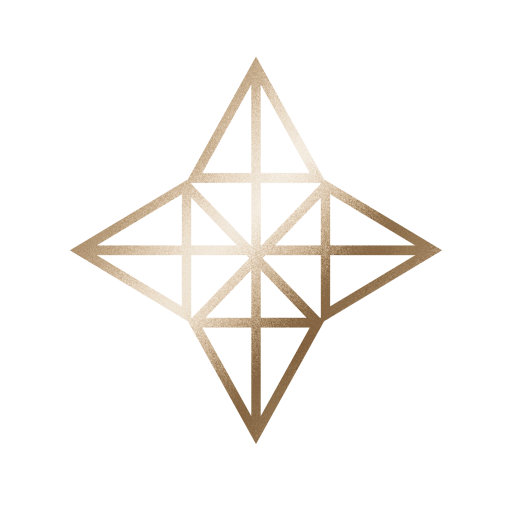
My favorite time to drive the Pacific Coast Highway is in spring (around April or May) when it’s the peak season for wildflowers and flower fields and the weather is usually clear and sunny.
This is also a good time of the year for whale watching and viewing elephant seals in their natural habitat. And, in general, things are slightly less busy in the spring compared to summer.
With that said, California has a very temperate climate so any time of the year can be good for driving the Pacific Coast Highway.
If I had to choose, the only months I’d recommend avoiding are February, March, and June. February and March are usually the rainiest months on the California Coast (although we still don’t get a ton of rain).
And we often get “June Gloom,” which means dealing with a lot of overcast mornings and afternoons in June.
If you decide to make this trip in the fall, be sure to check out our guide to where you can see fall colors in California.
What is the prettiest part of the Pacific Coast Highway?
There are plenty of stunning stretches along the Pacific Coast Highway, but the prettiest part is the drive from Monterey to Santa Barbara. And, more specifically, the Big Sur coastline.
It’s hard to beat golden cliffs, aquamarine water, and art deco bridges (like Bixby Bridge).
What should you not miss on the Pacific Coast Highway?
There’s a lot to see on a PCH road trip, but a few sights that you definitely shouldn’t miss are the following:
- Point Reyes National Seashore
- Muir Woods
- Golden Gate Bridge
- Santa Cruz Beach Boardwalk & West Cliff Drive
- Bixby Bridge, Pfeiffer Beach, and the Big Sur coastline in general
- Point Lobos
- Hearst Castle
- Morro Bay
- Santa Monica & Venice Beach
- Crystal Cove State Park
- Laguna Beach
What kind of car should you drive on the PCH?
A convertible is a classic option if that’s available because there’s nothing better than feeling the air on your face when you’re driving down the coast.
But really, any car that’s good at hugging the curves of the road and smooth to drive is a good bet.
It’s also a good idea to go for smaller cars as opposed to large trucks, SUVs, or RVs since Highway 1 can get narrow along some stretches.
Get your FREE California Travel Planner – including printable checklists and my favorite two-week itinerary for the state.
ABOUT THE AUTHOR
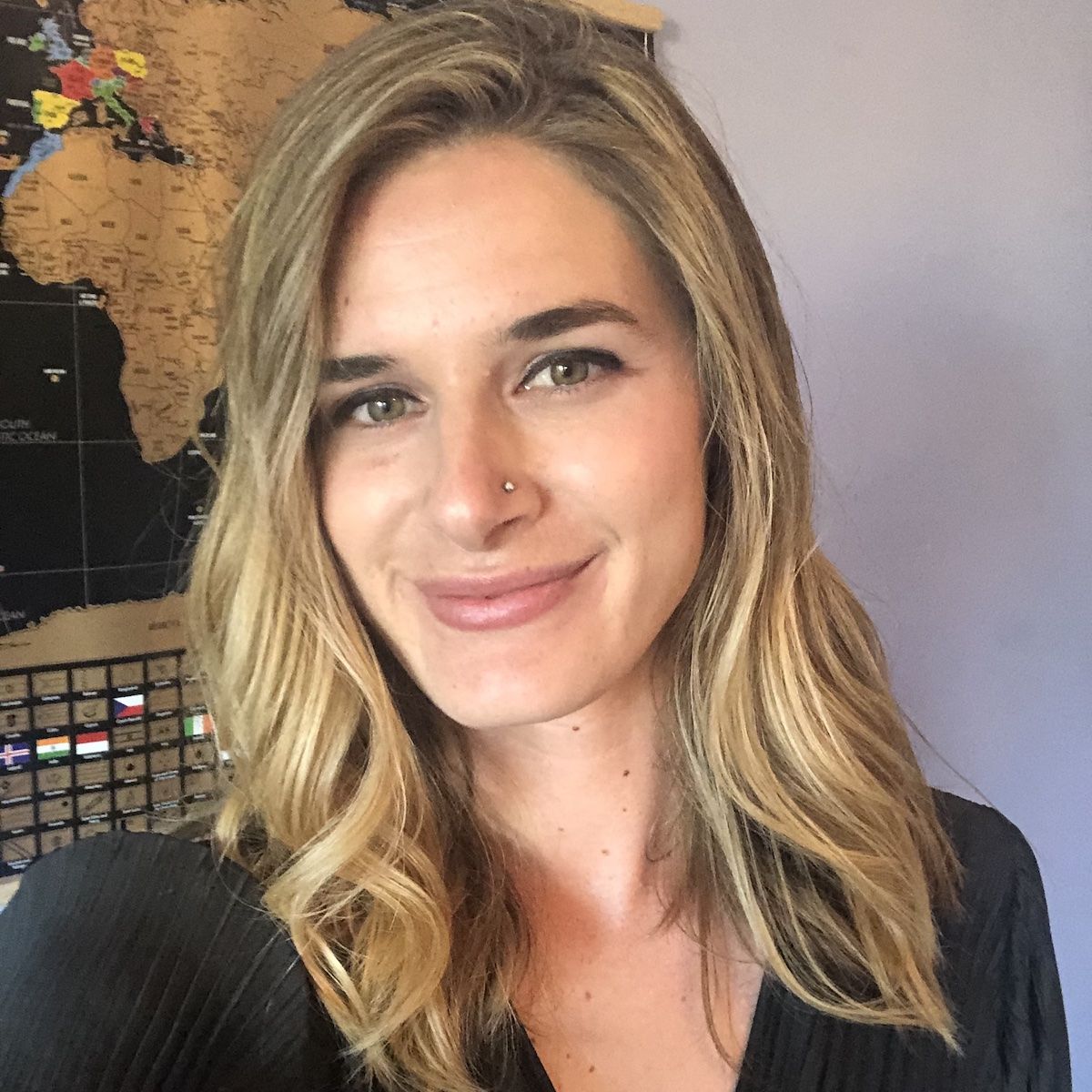
Mimi McFadden
Founder & Editor-In-Chief
Mimi McFadden initially started The Atlas Heart in 2013 to write about her adventures abroad. But since 2019, The Atlas Heart has become a love letter to the Golden State. Mimi enjoys sharing her first-hand knowledge and expertise with the places she knows so well and making the most comprehensive travel guides possible. When she’s not hiking and exploring new places in California, she loves to travel abroad, read in her cozy chaise lounge, play basketball, and connect with friends and family over board games. Over her 28 years in California, she has lived in Santa Cruz (18 years), San Diego (5 years), and the San Francisco Bay Area (5 years), where she currently resides.
Looking for more California travel inspiration? Check out these related posts below!
Best Glamping Spots in California
Best Places to Spend Christmas in California
Where to Find Snow in California
Most Beautiful Sunflower Fields in California
Most Romantic Getaways in California
Best Lavender Farms in California
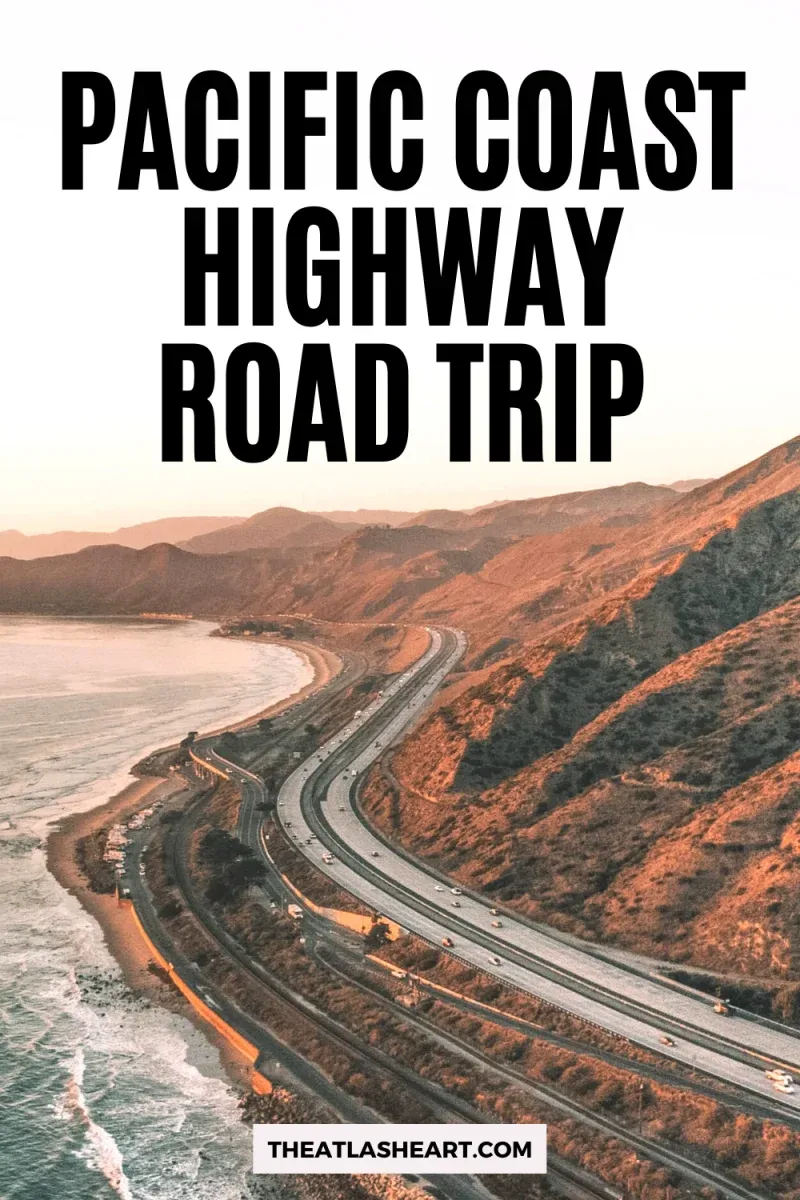
Pin this image for future reference

